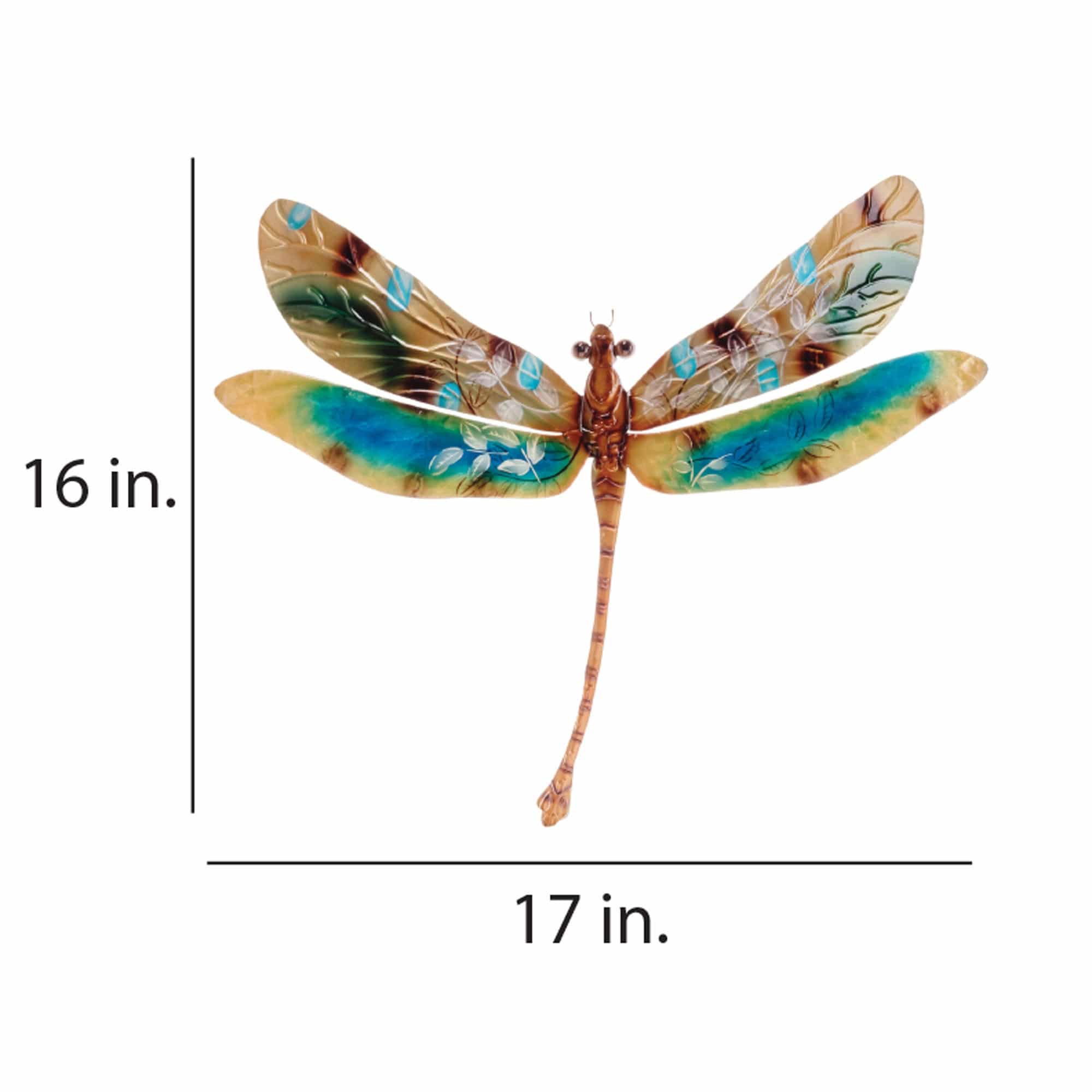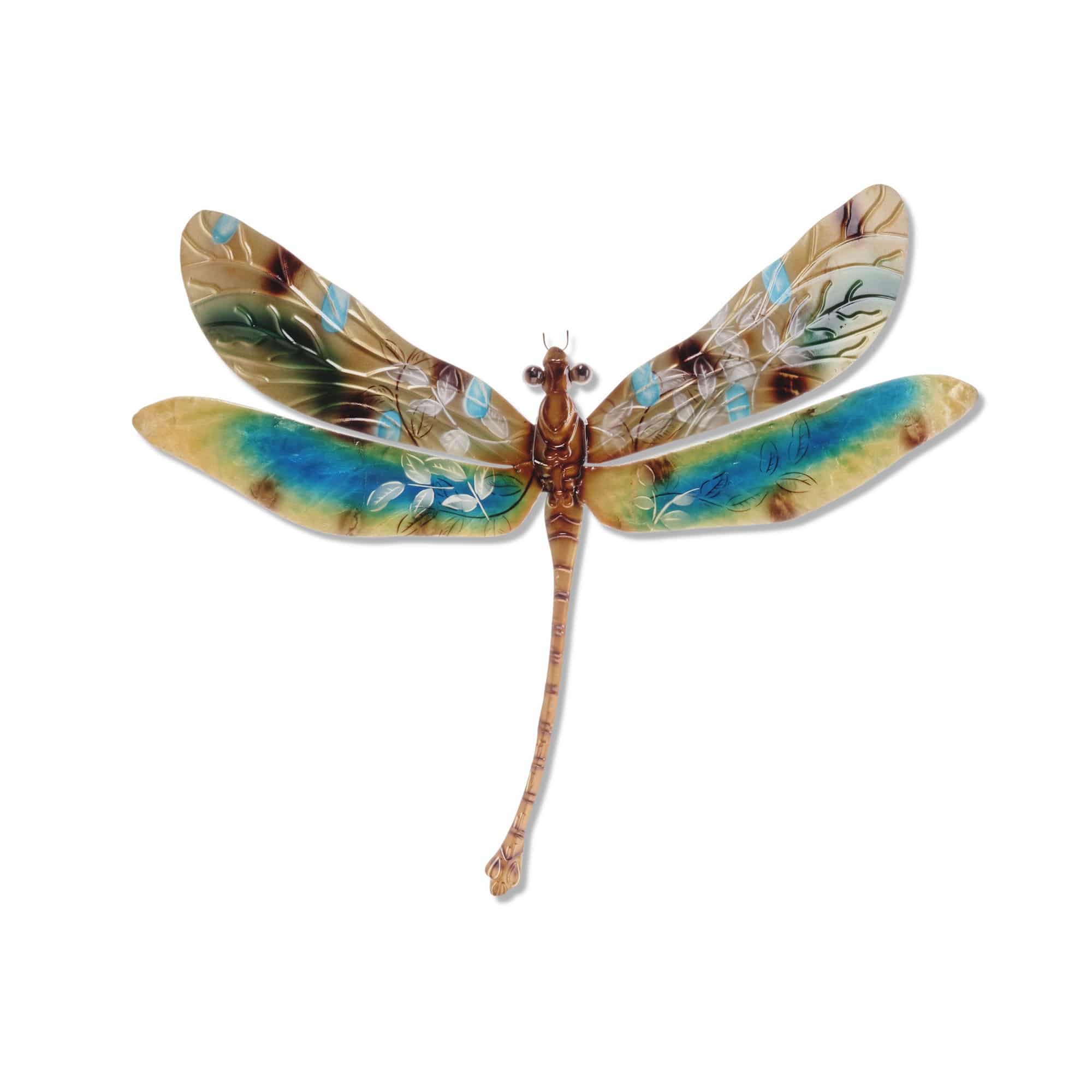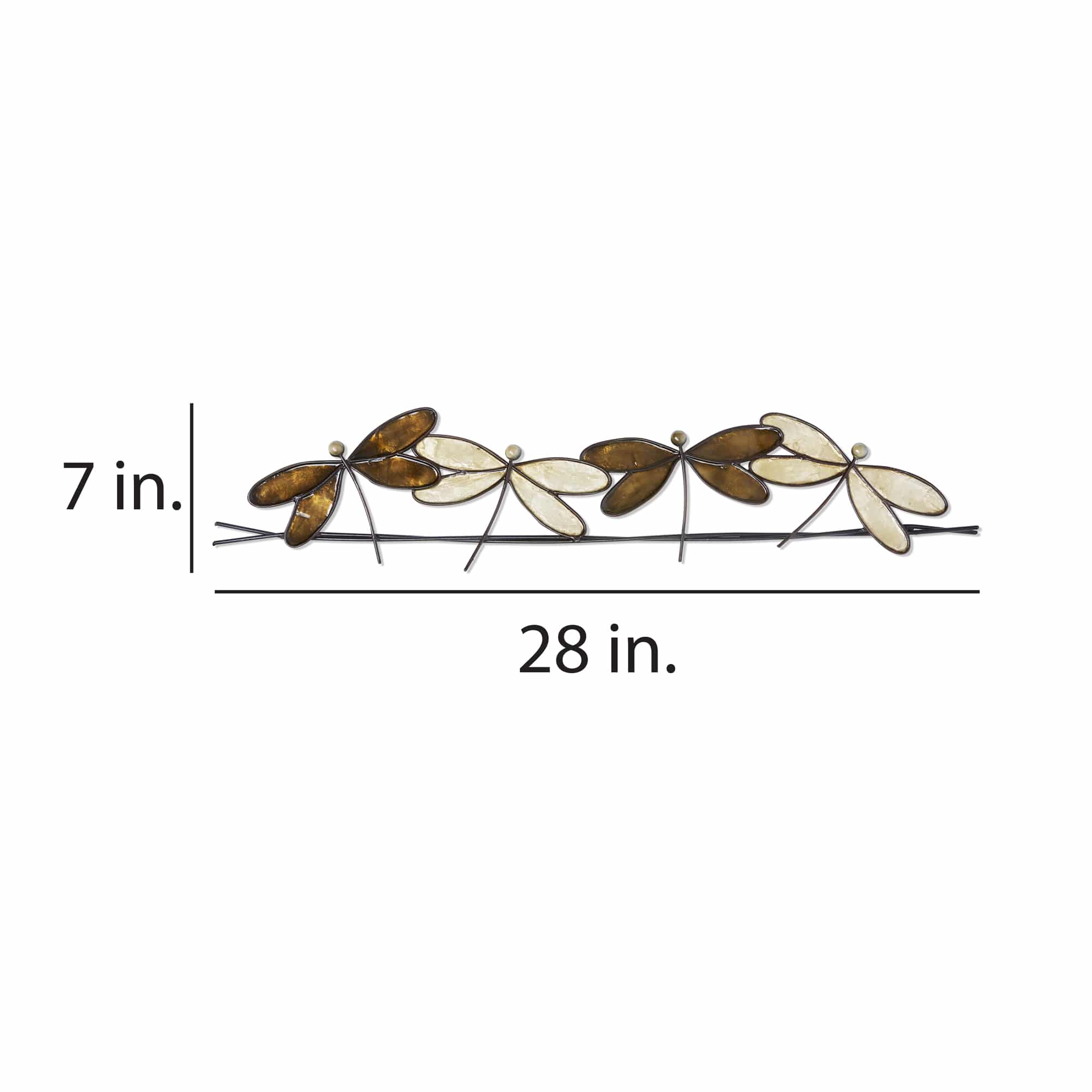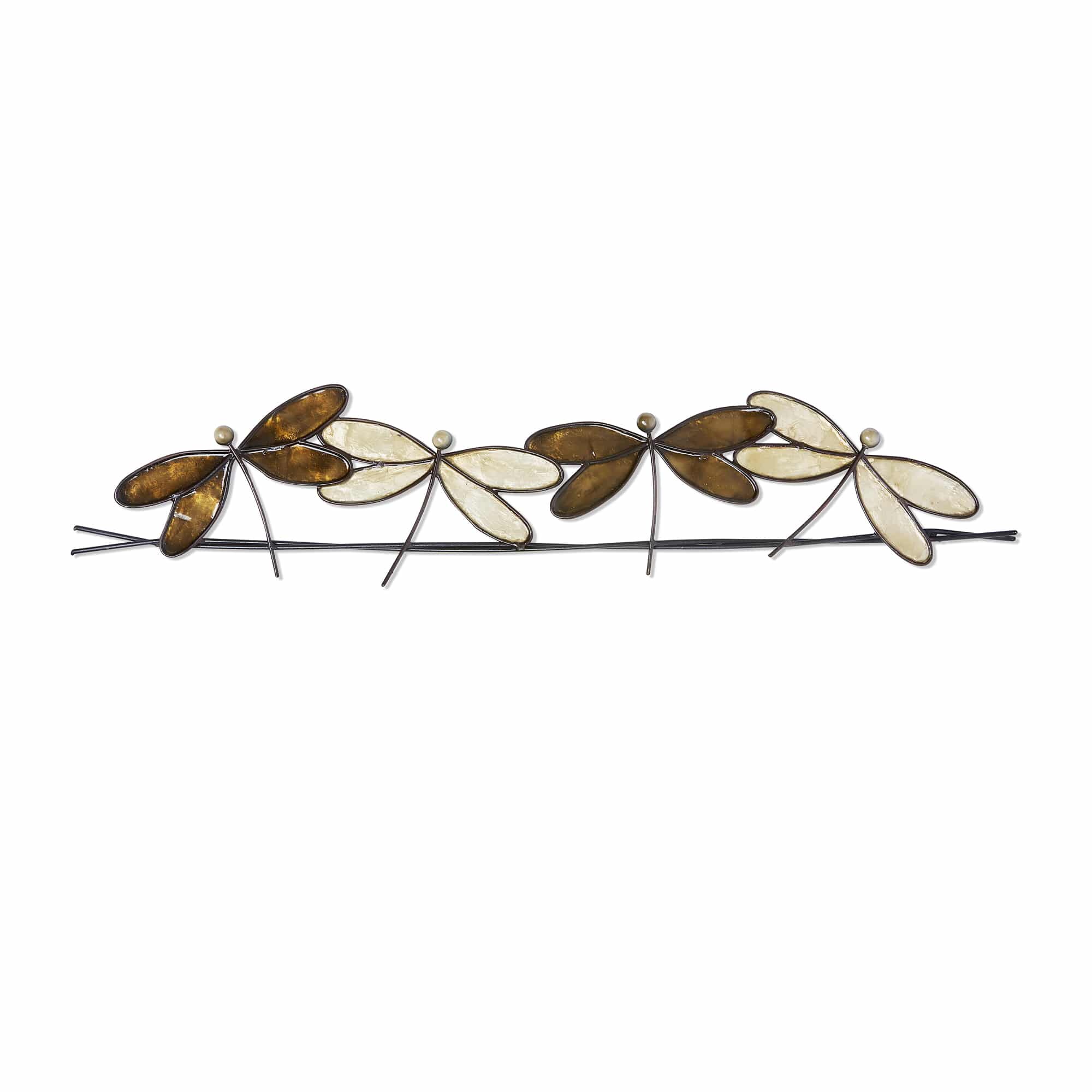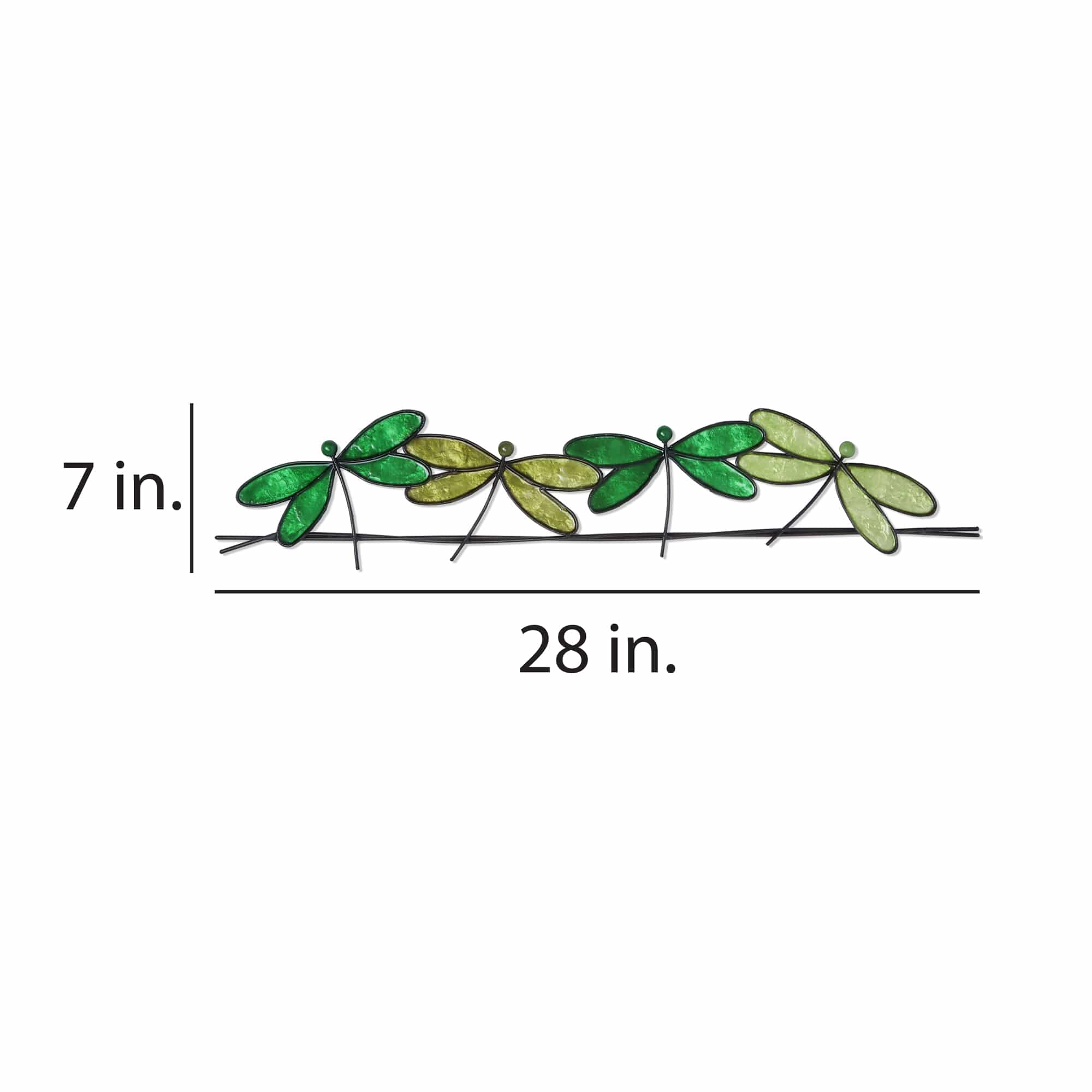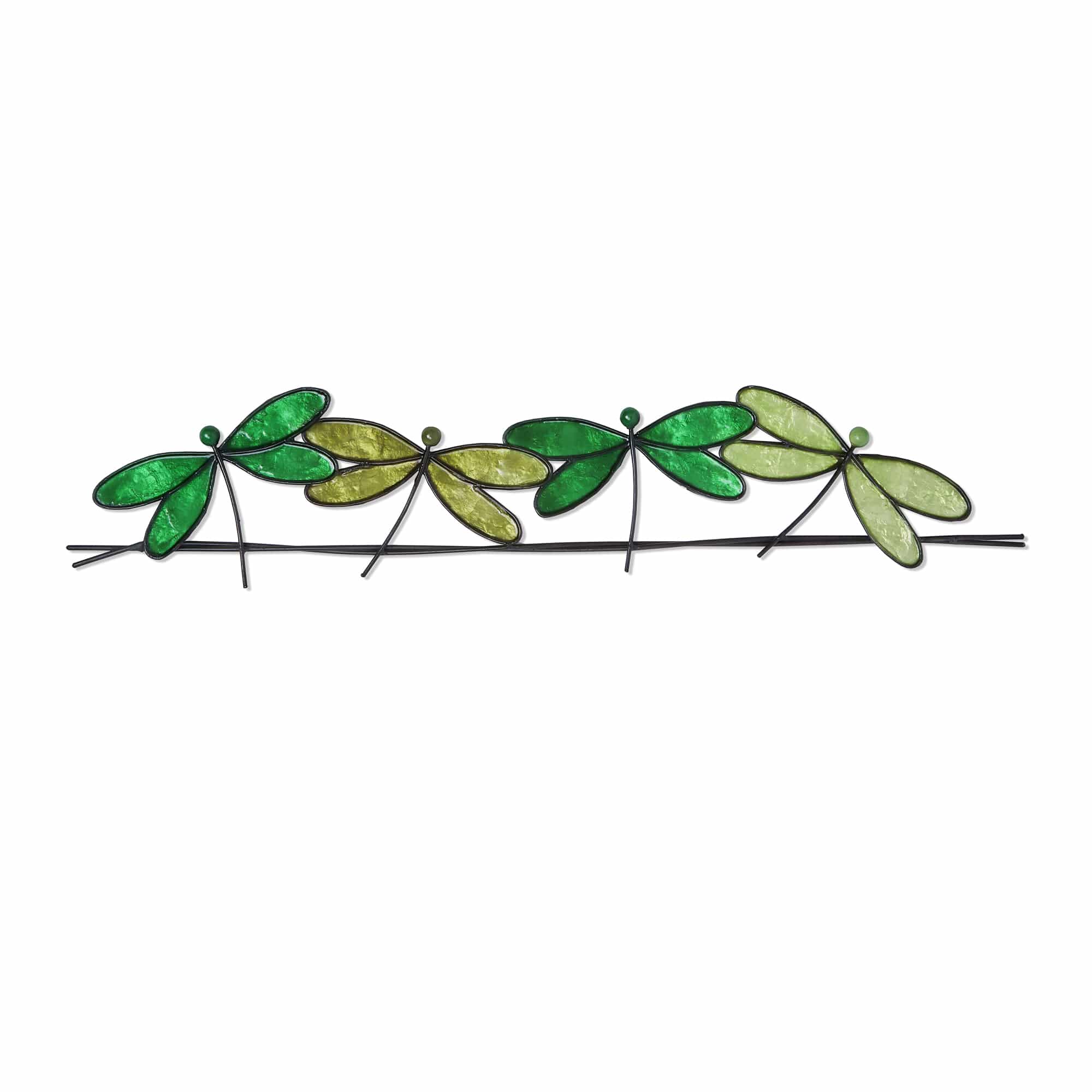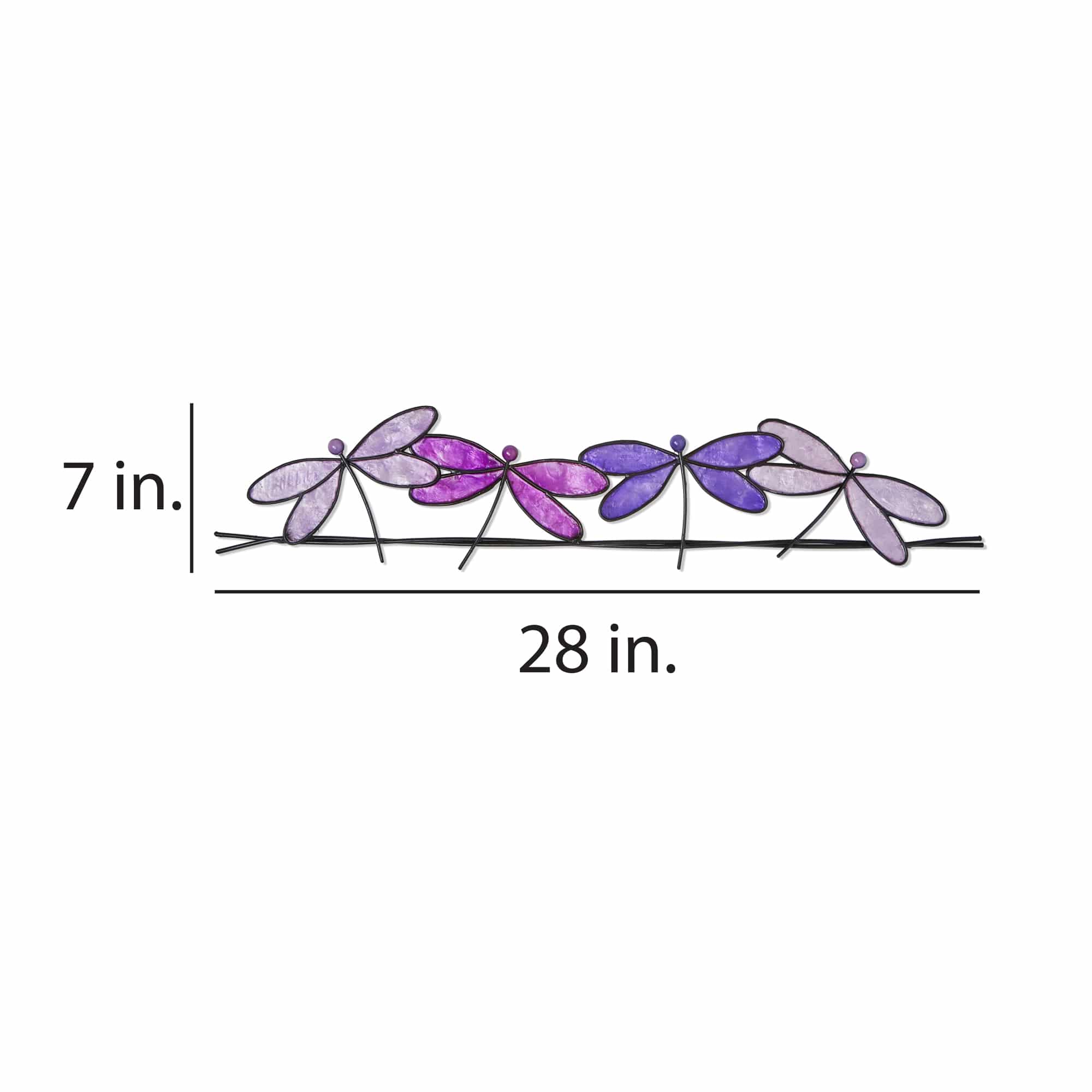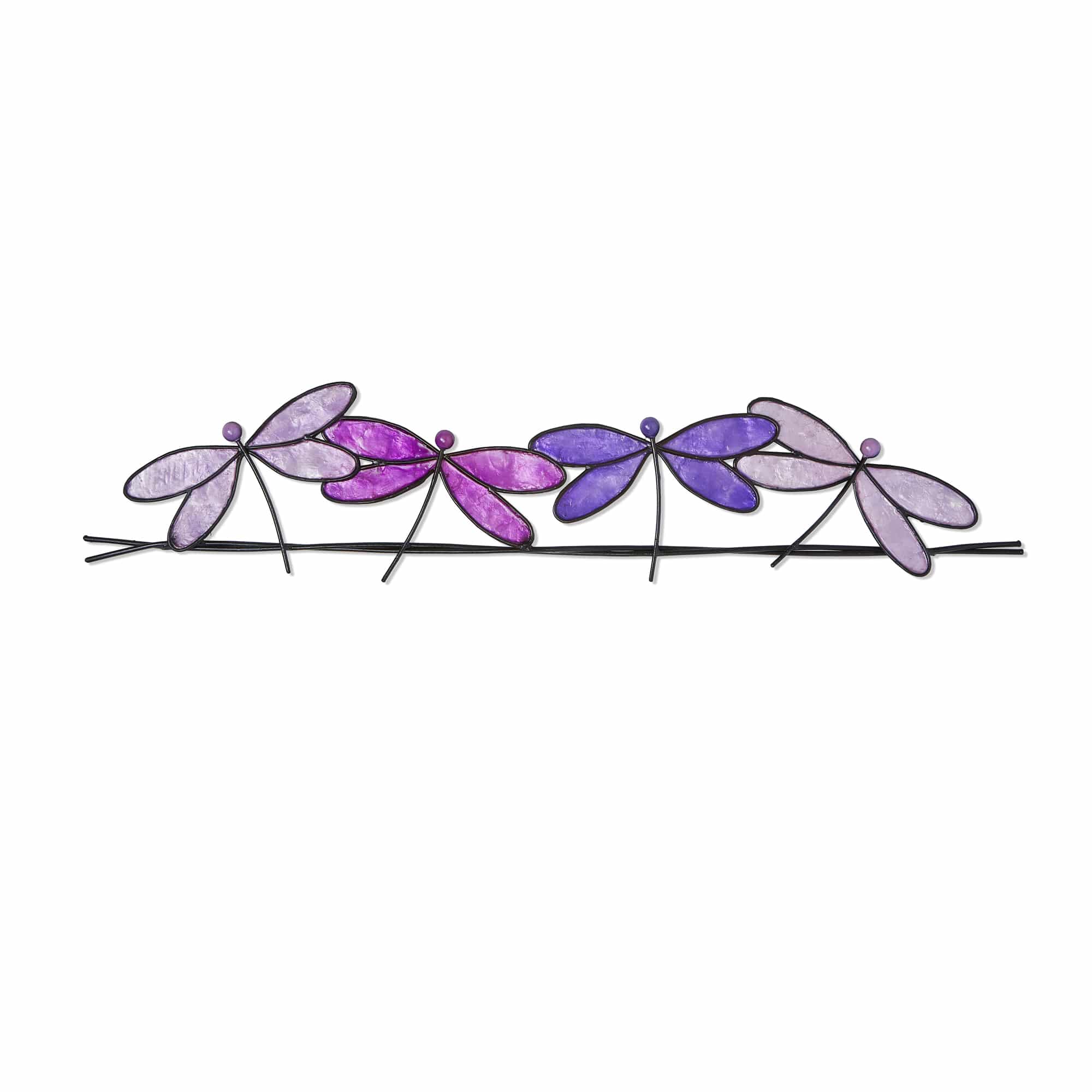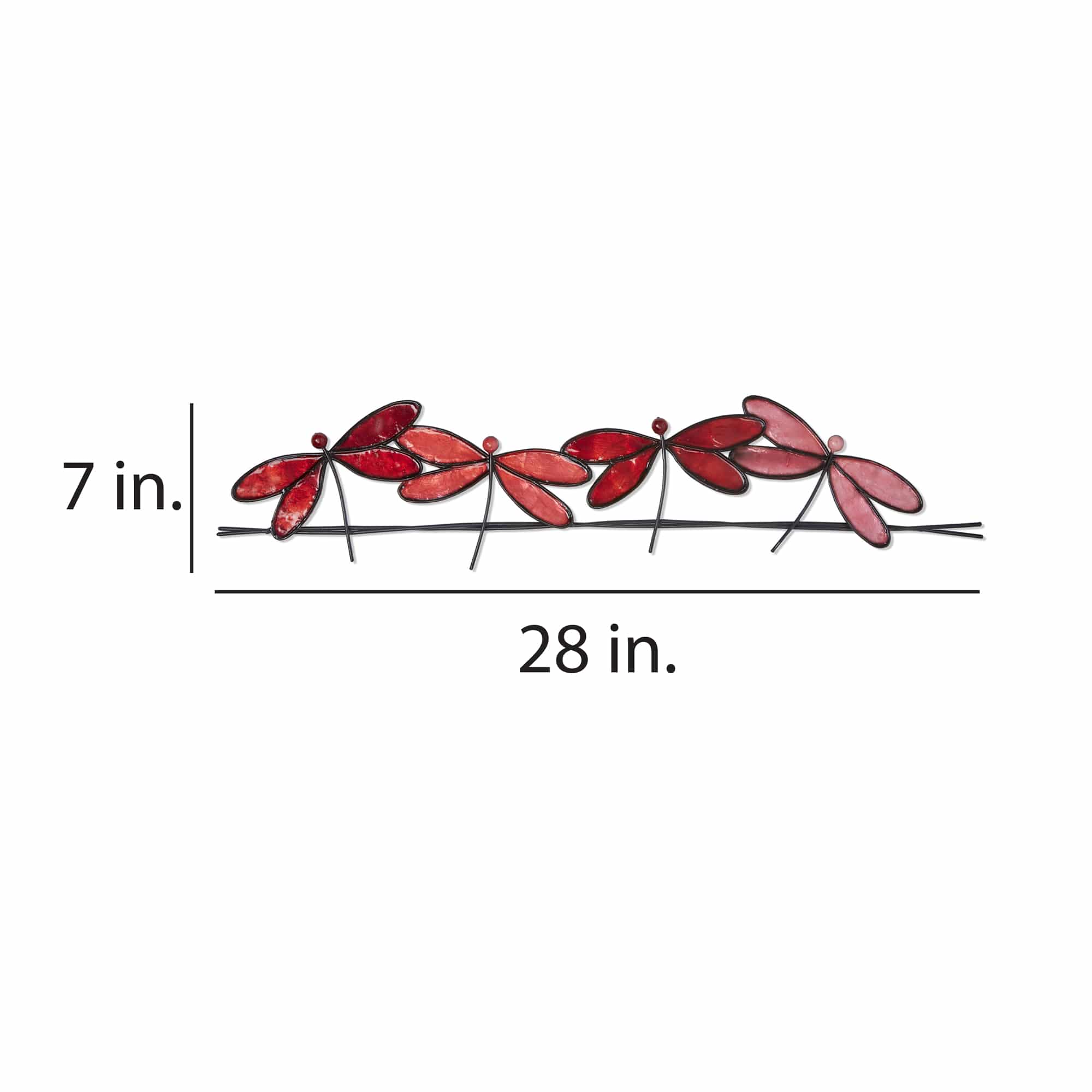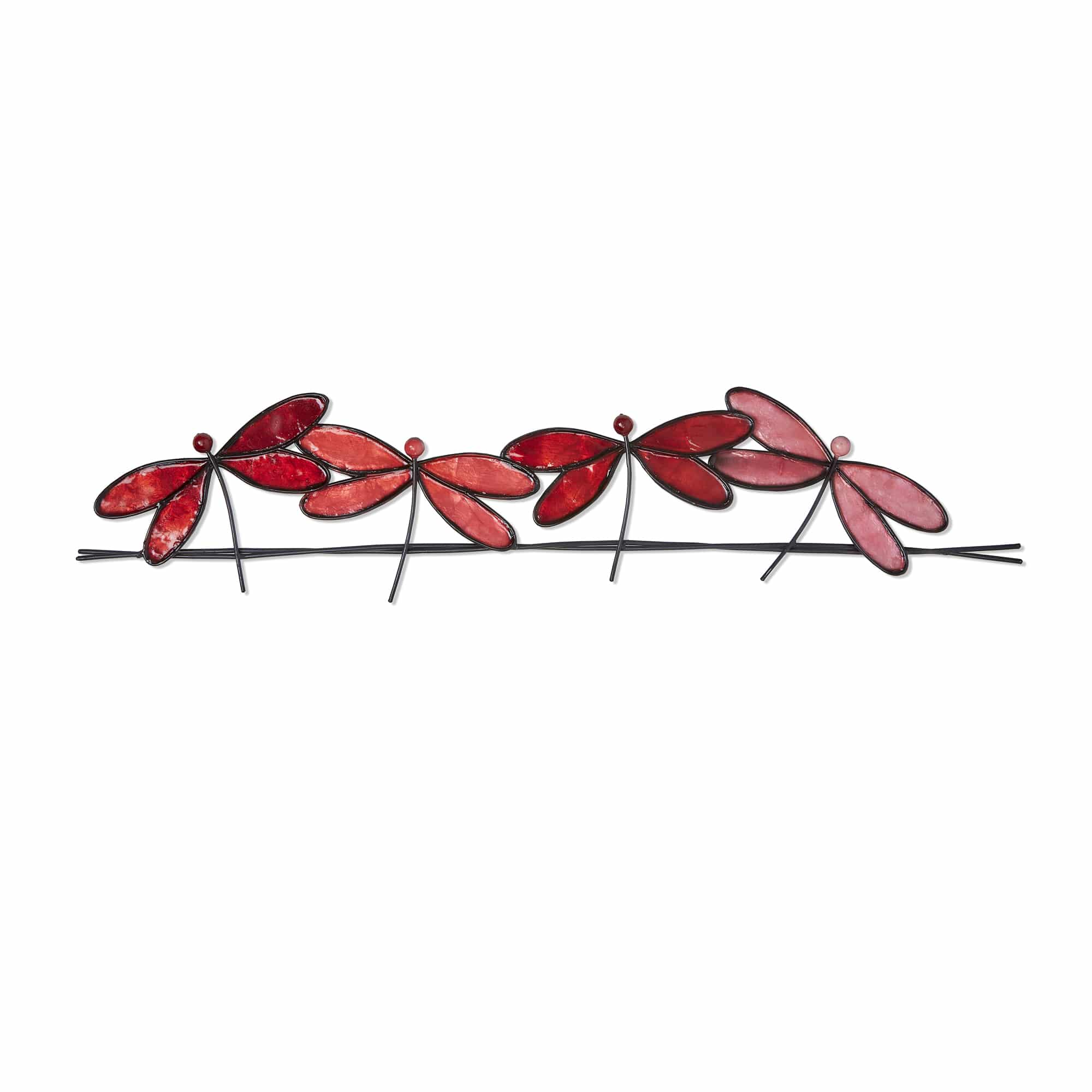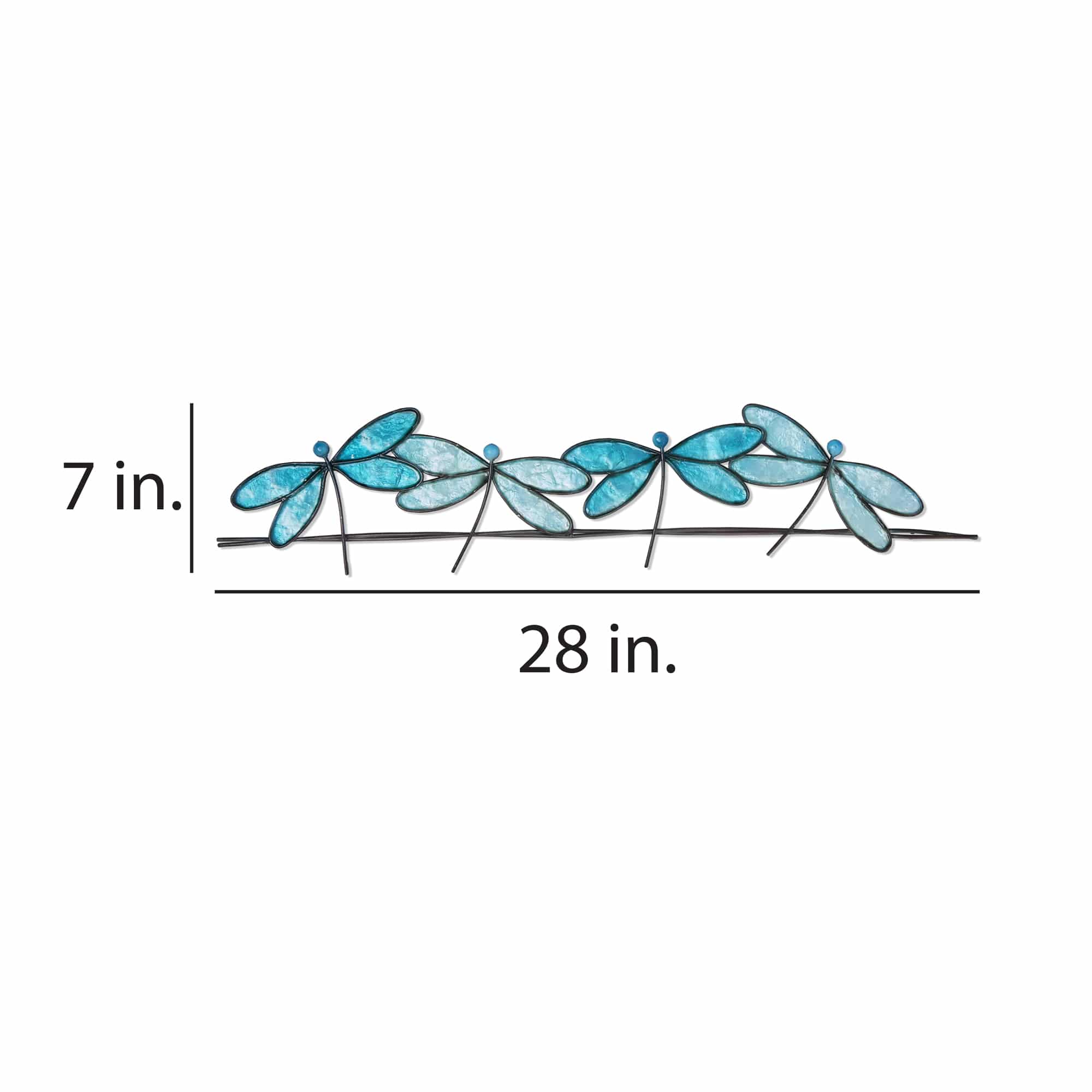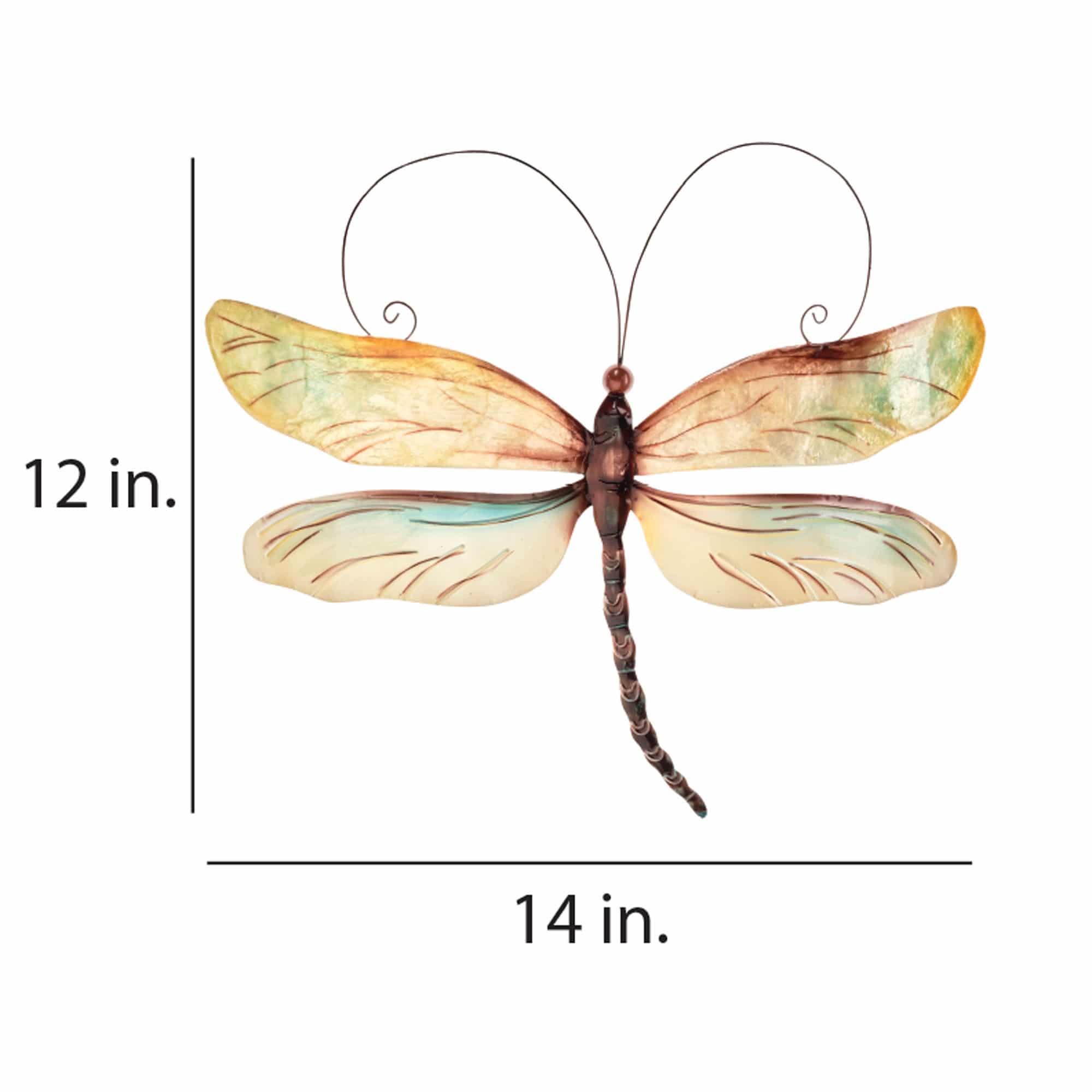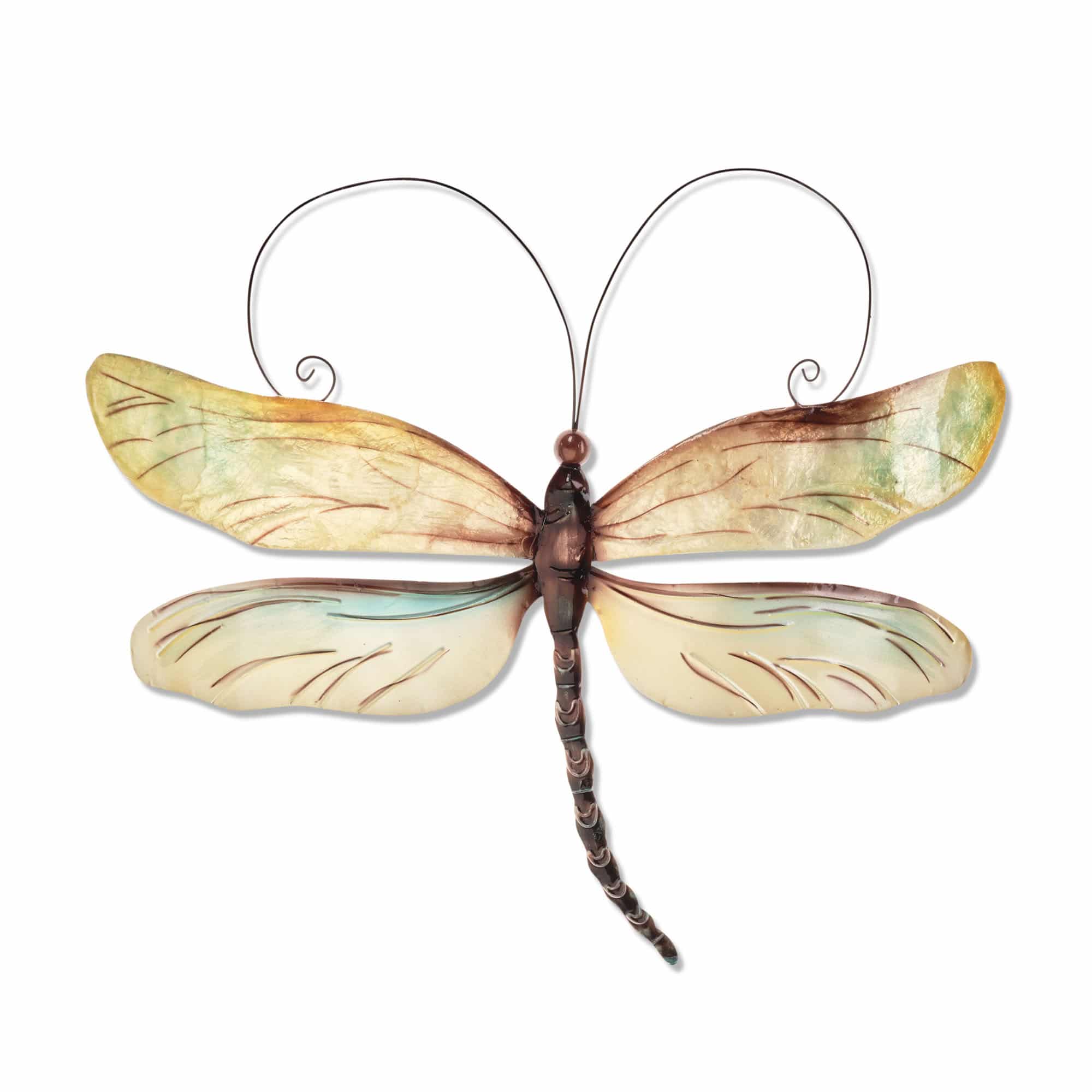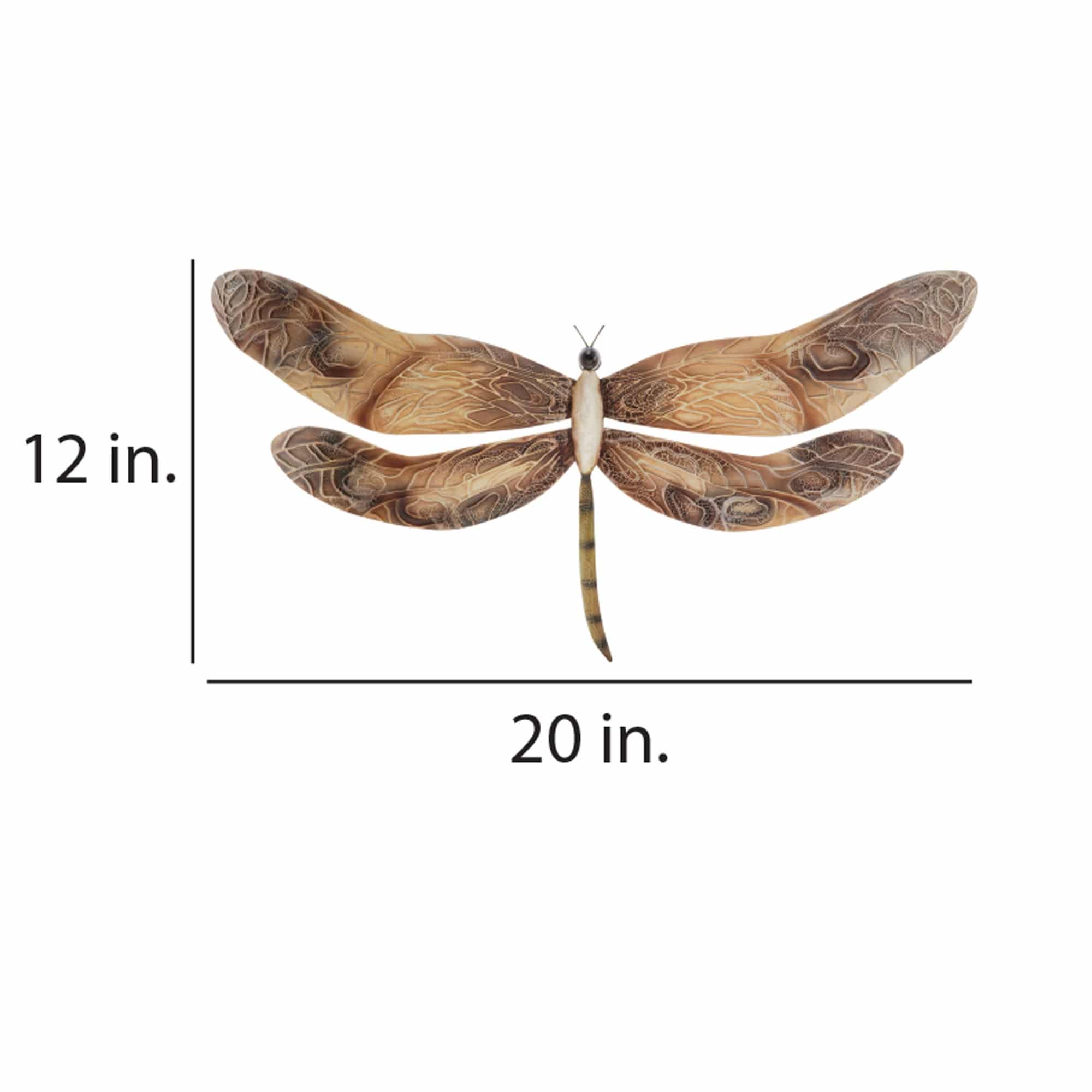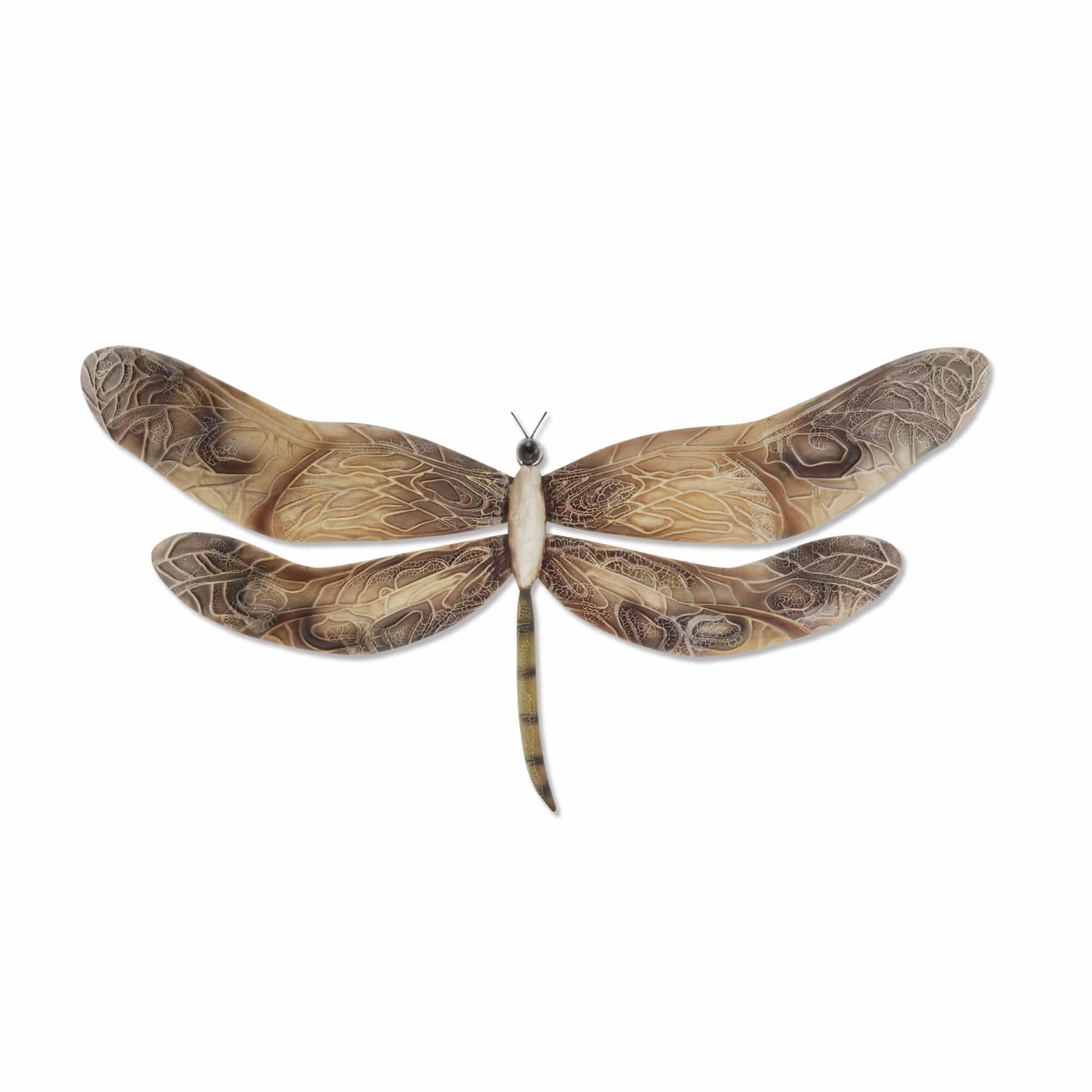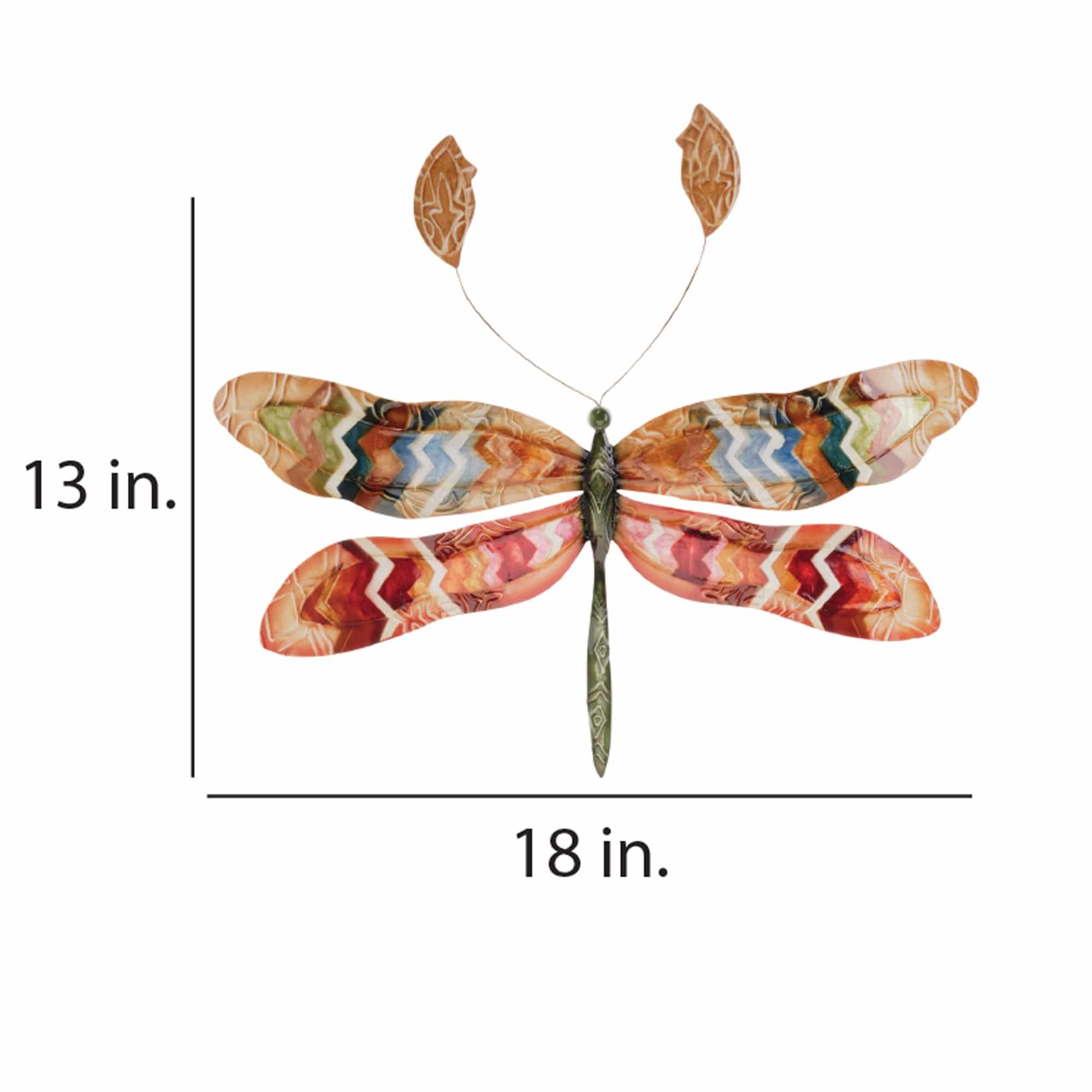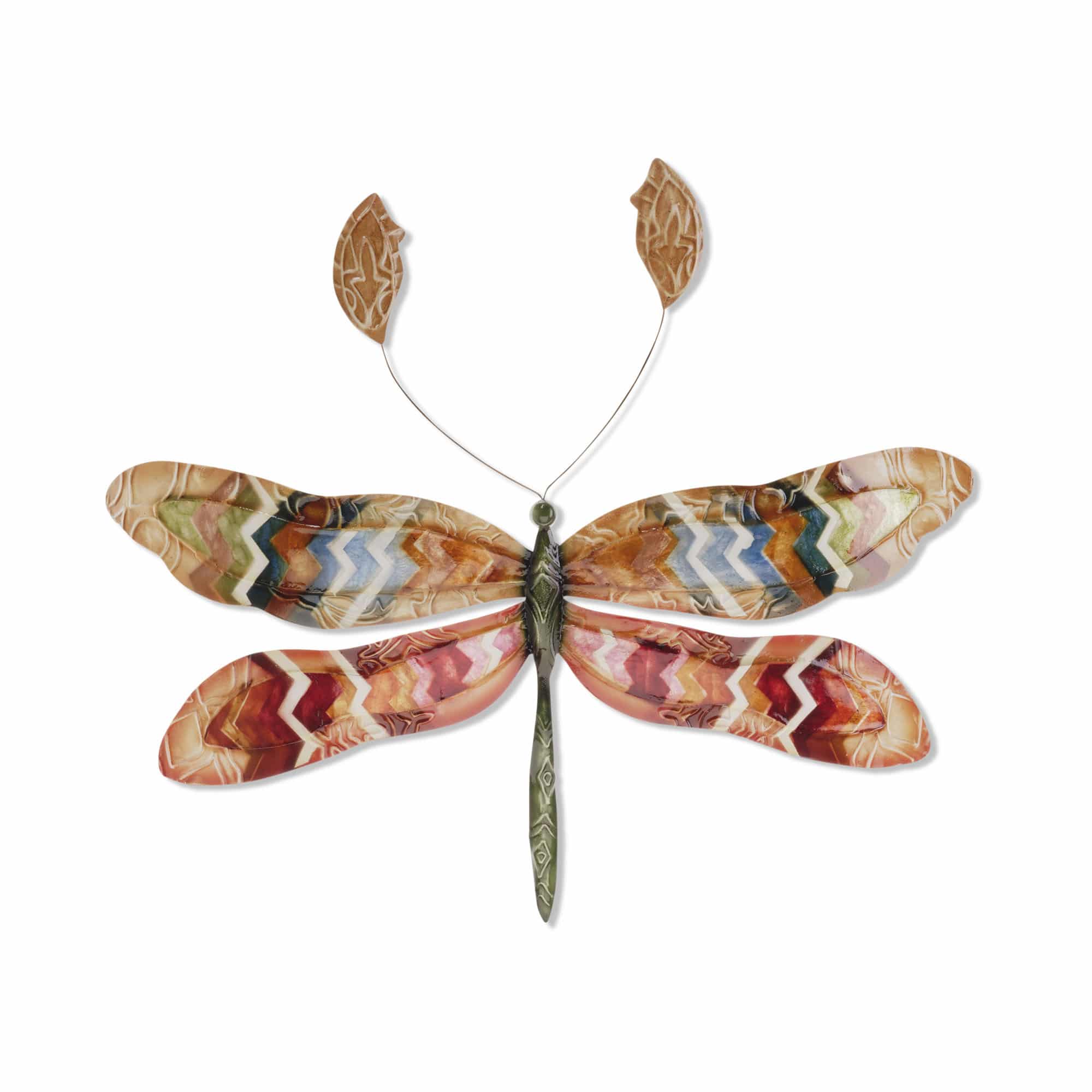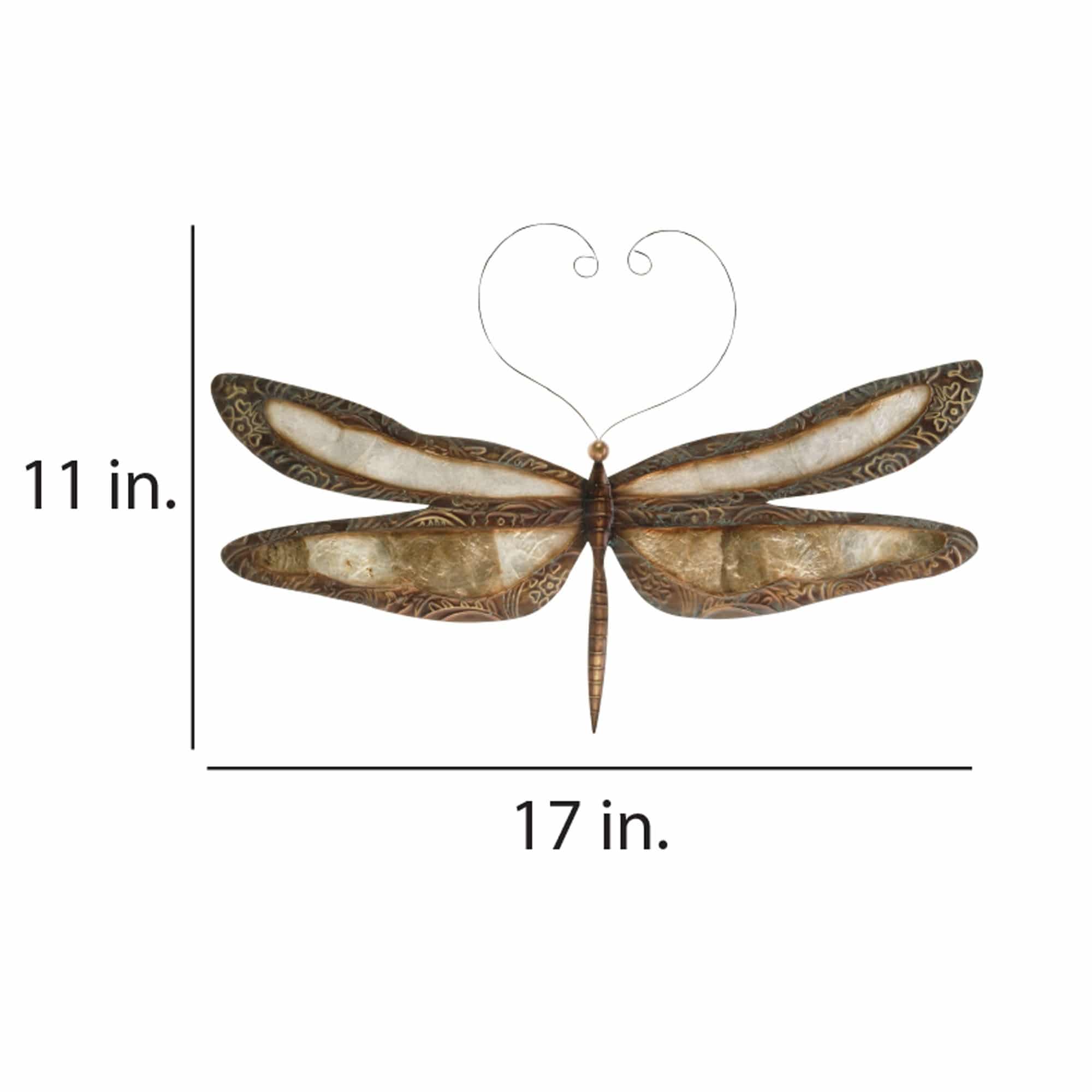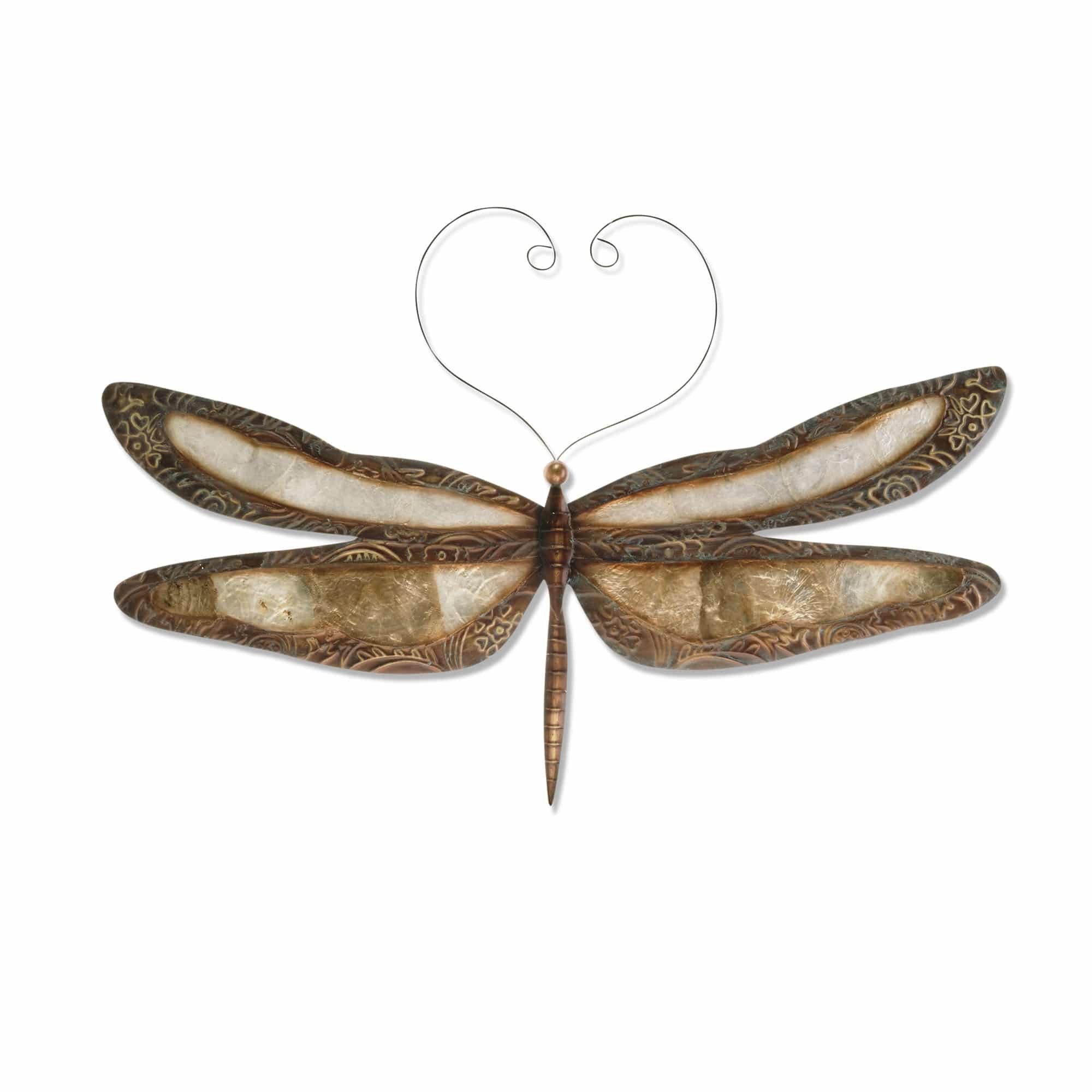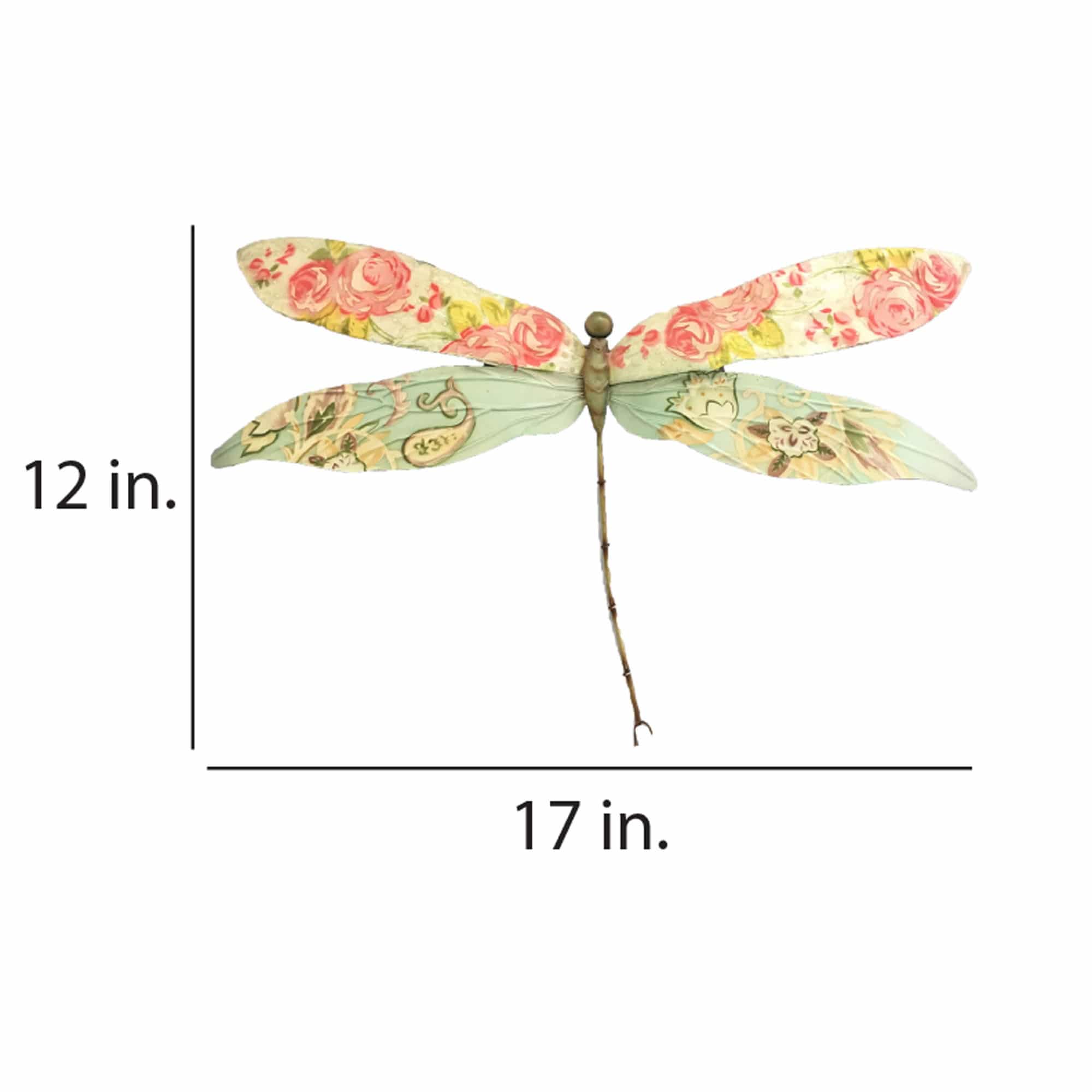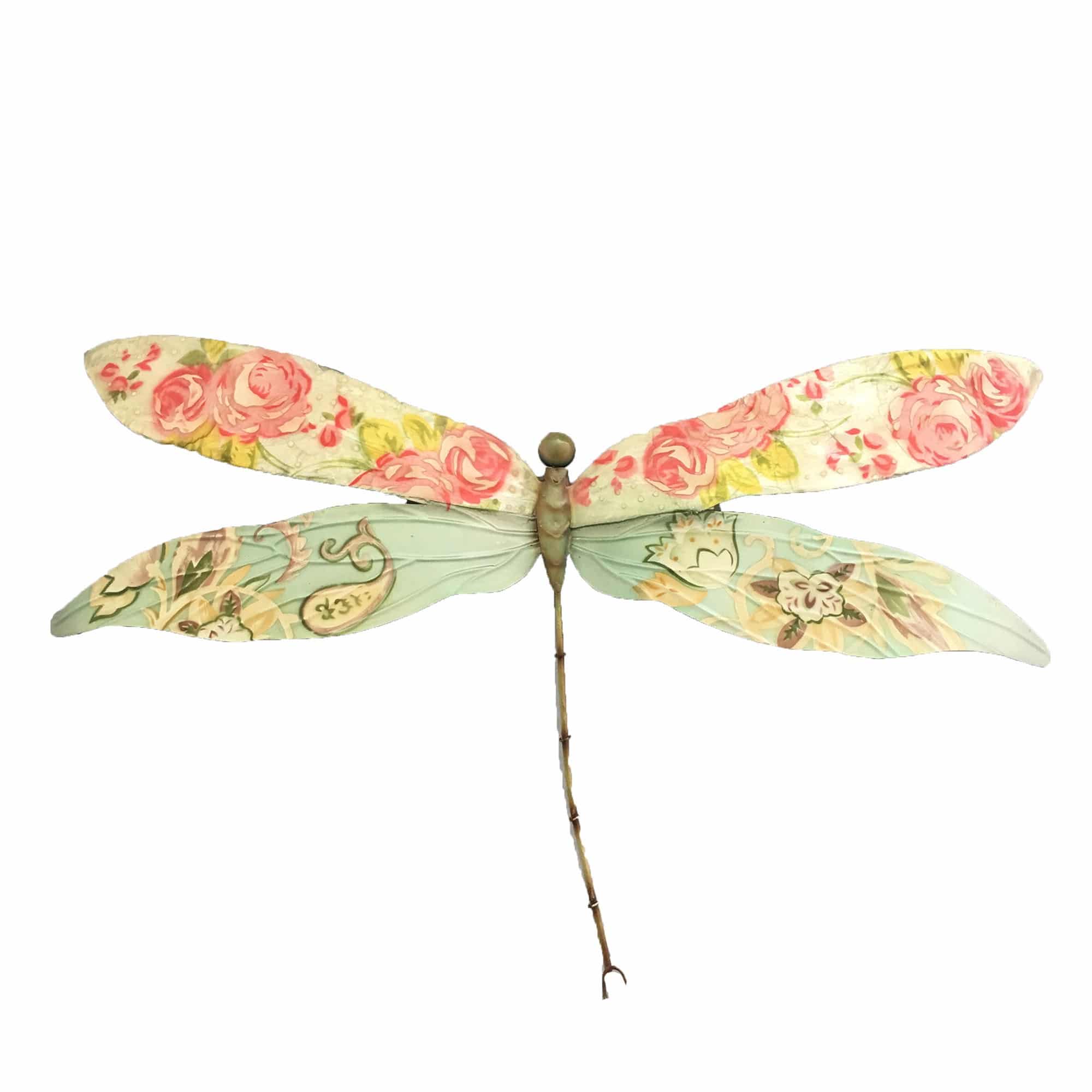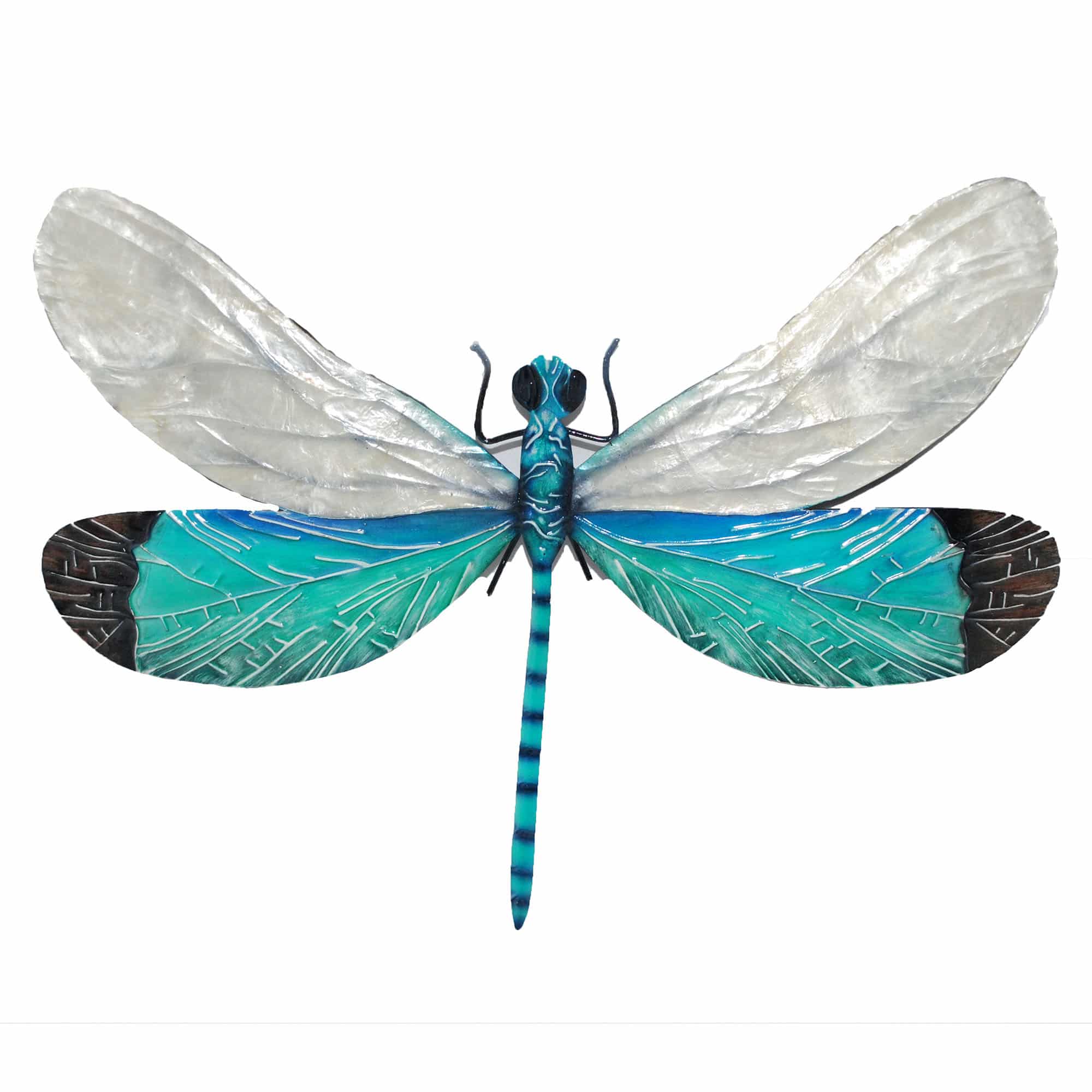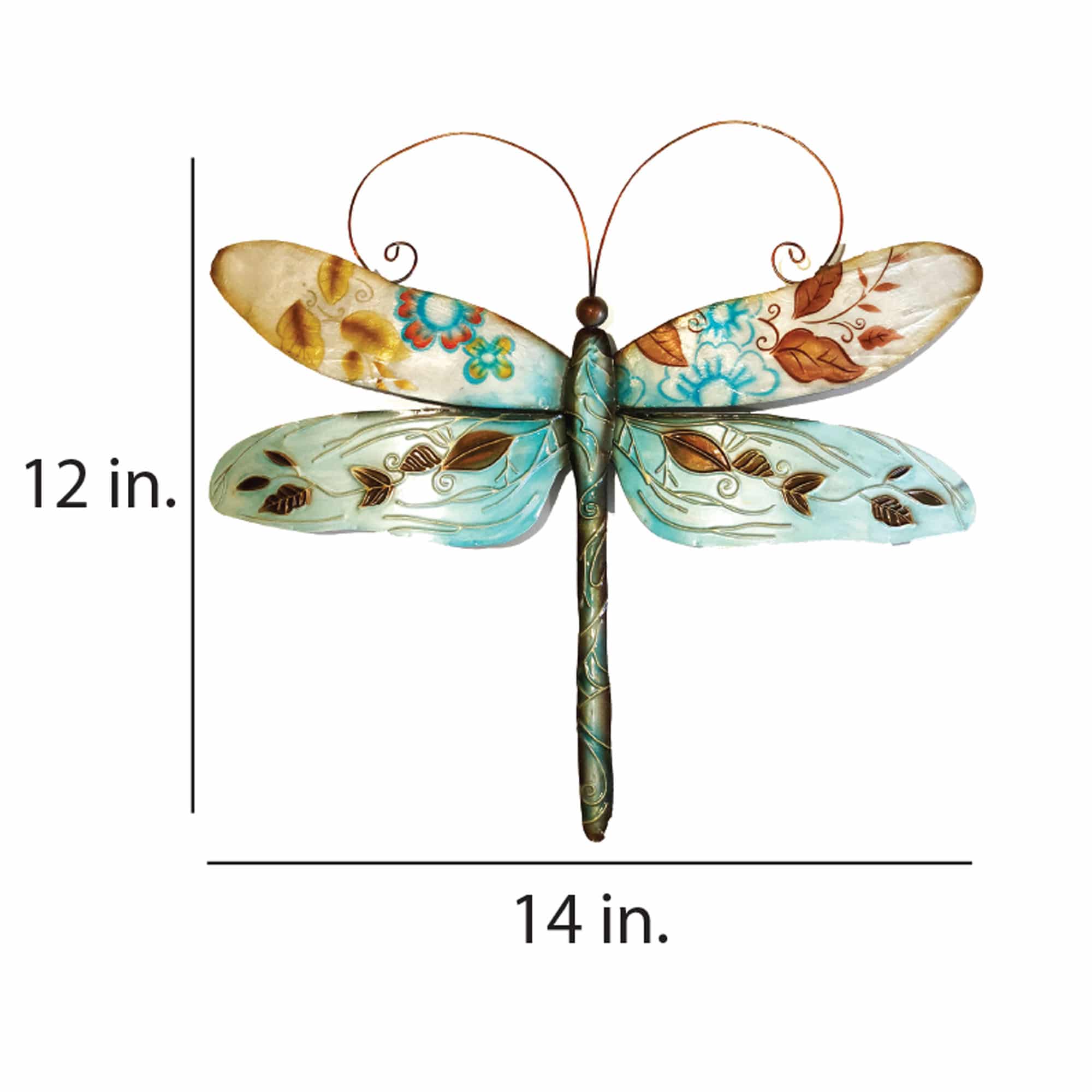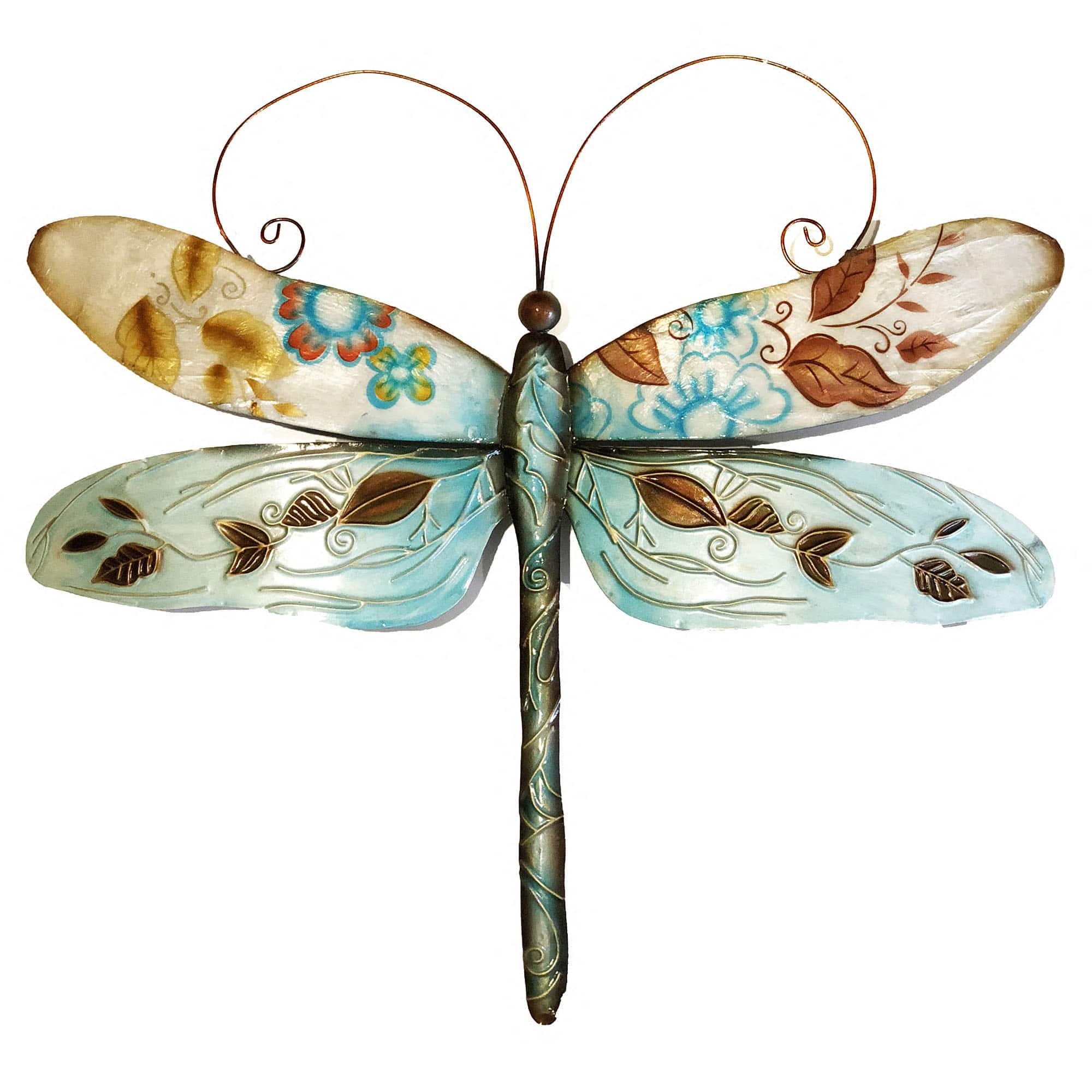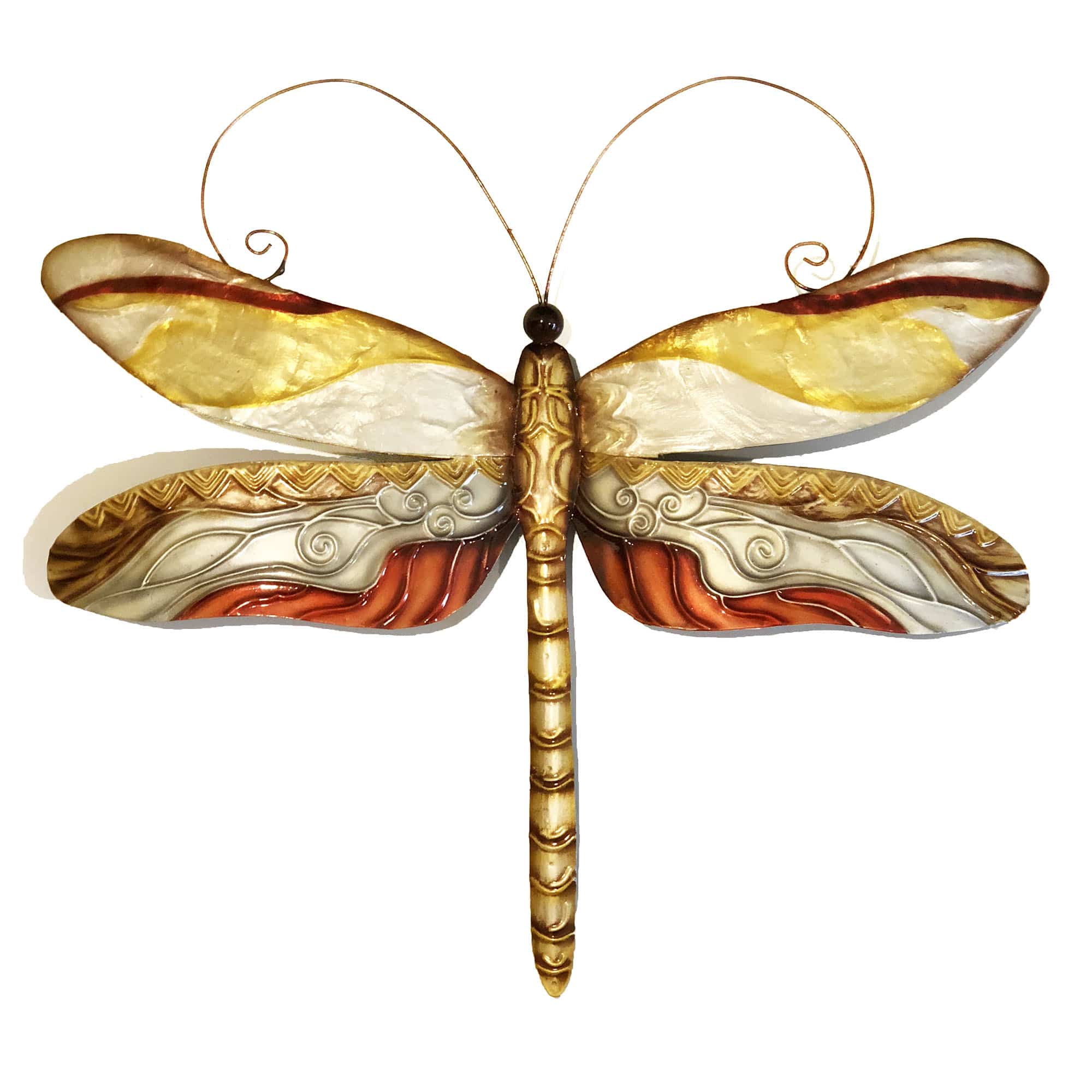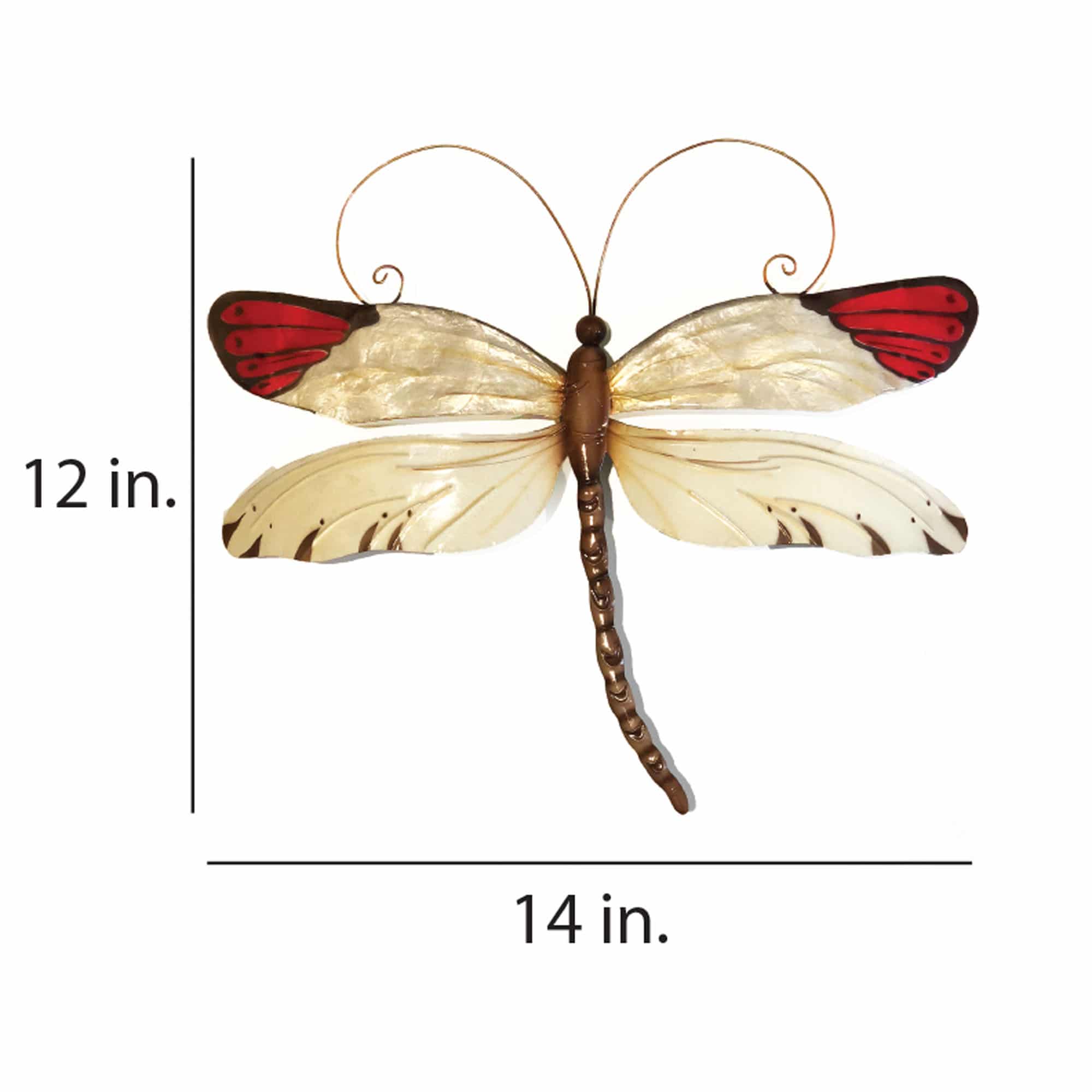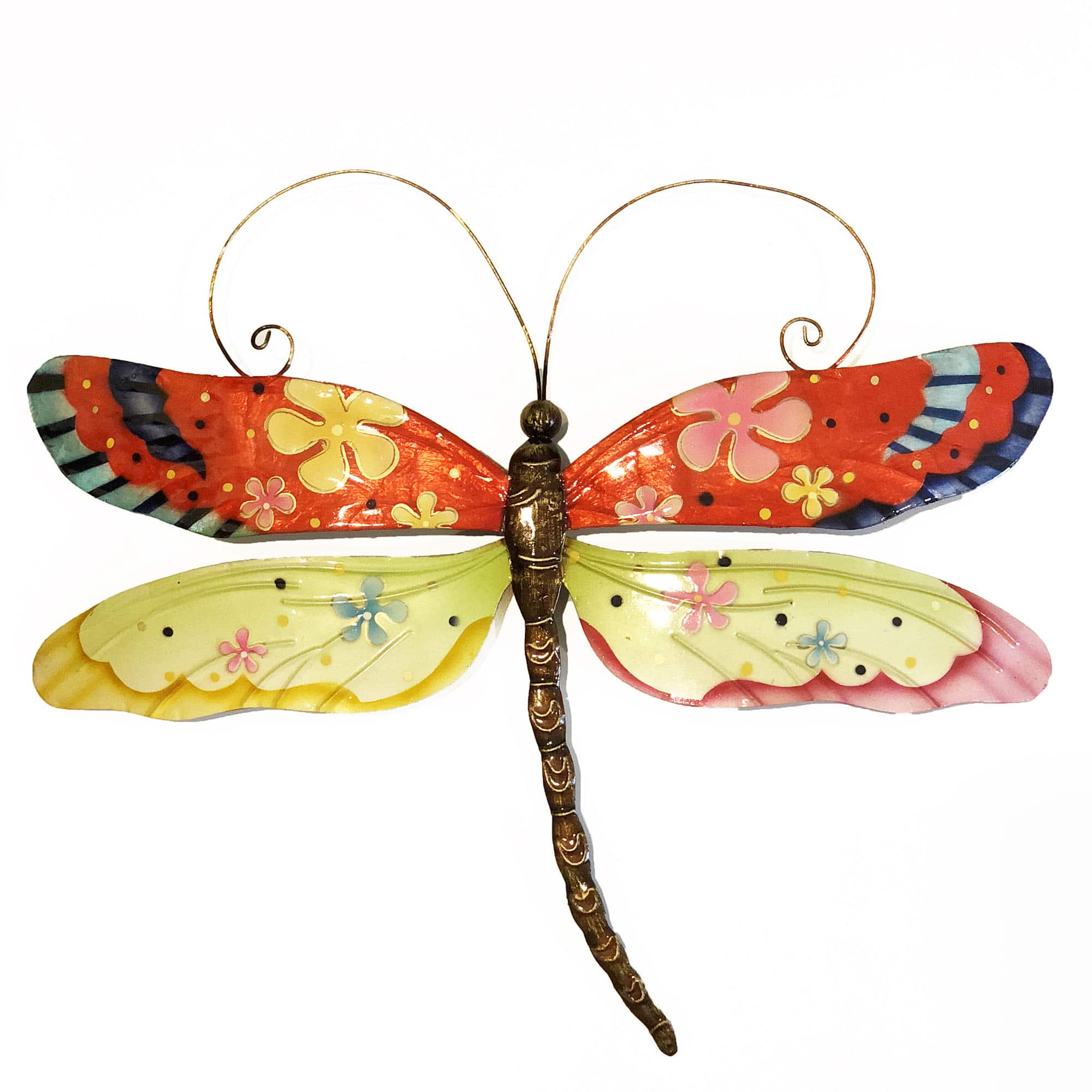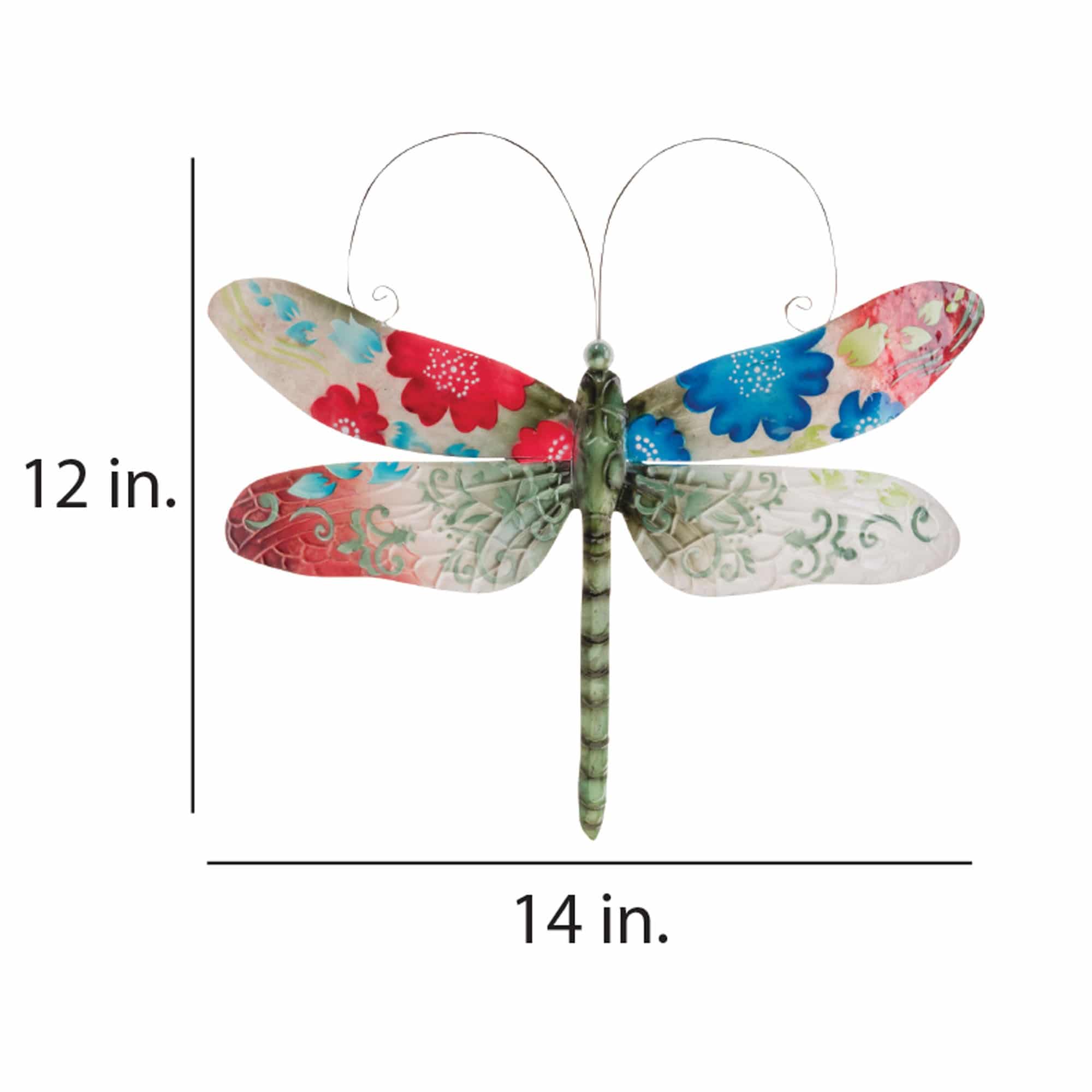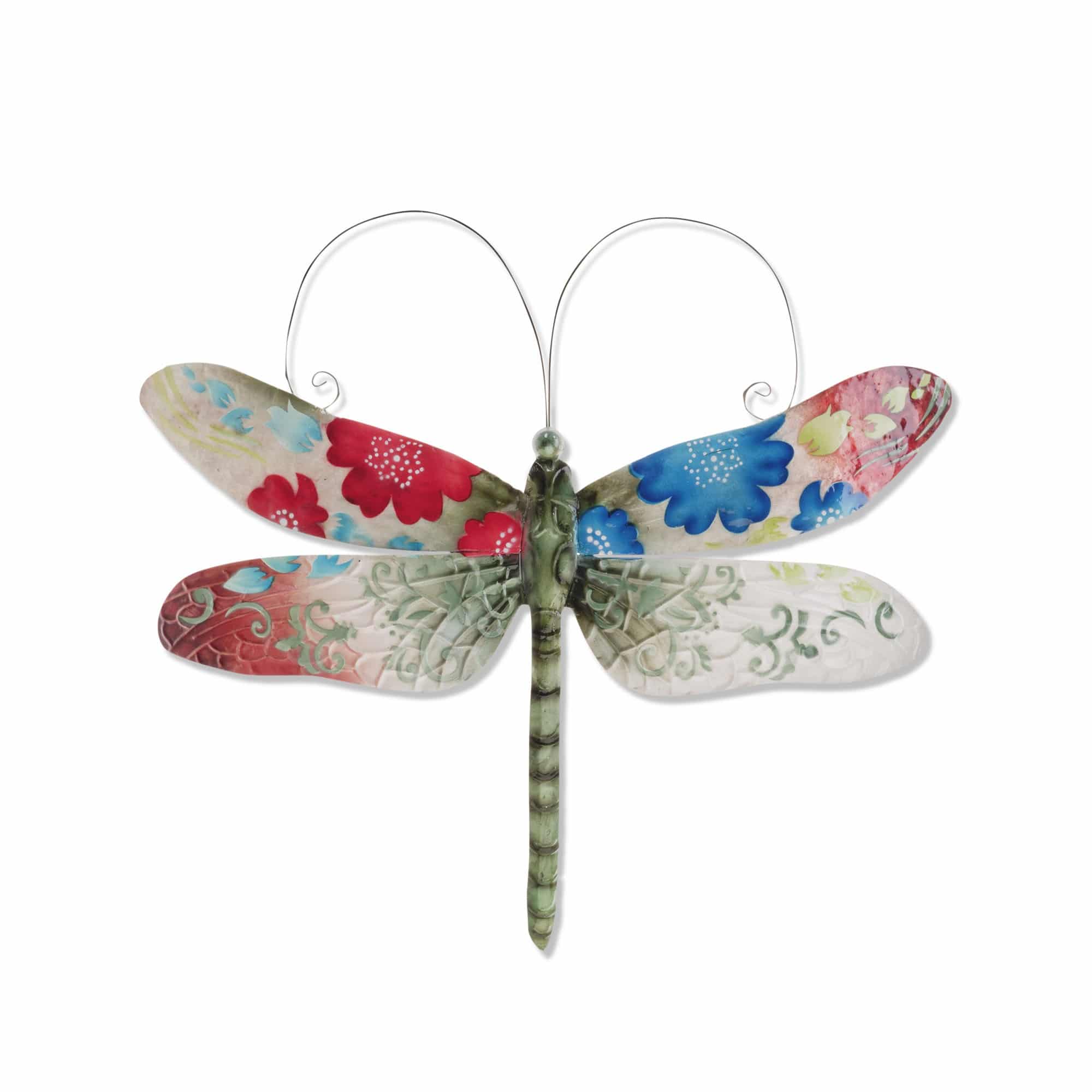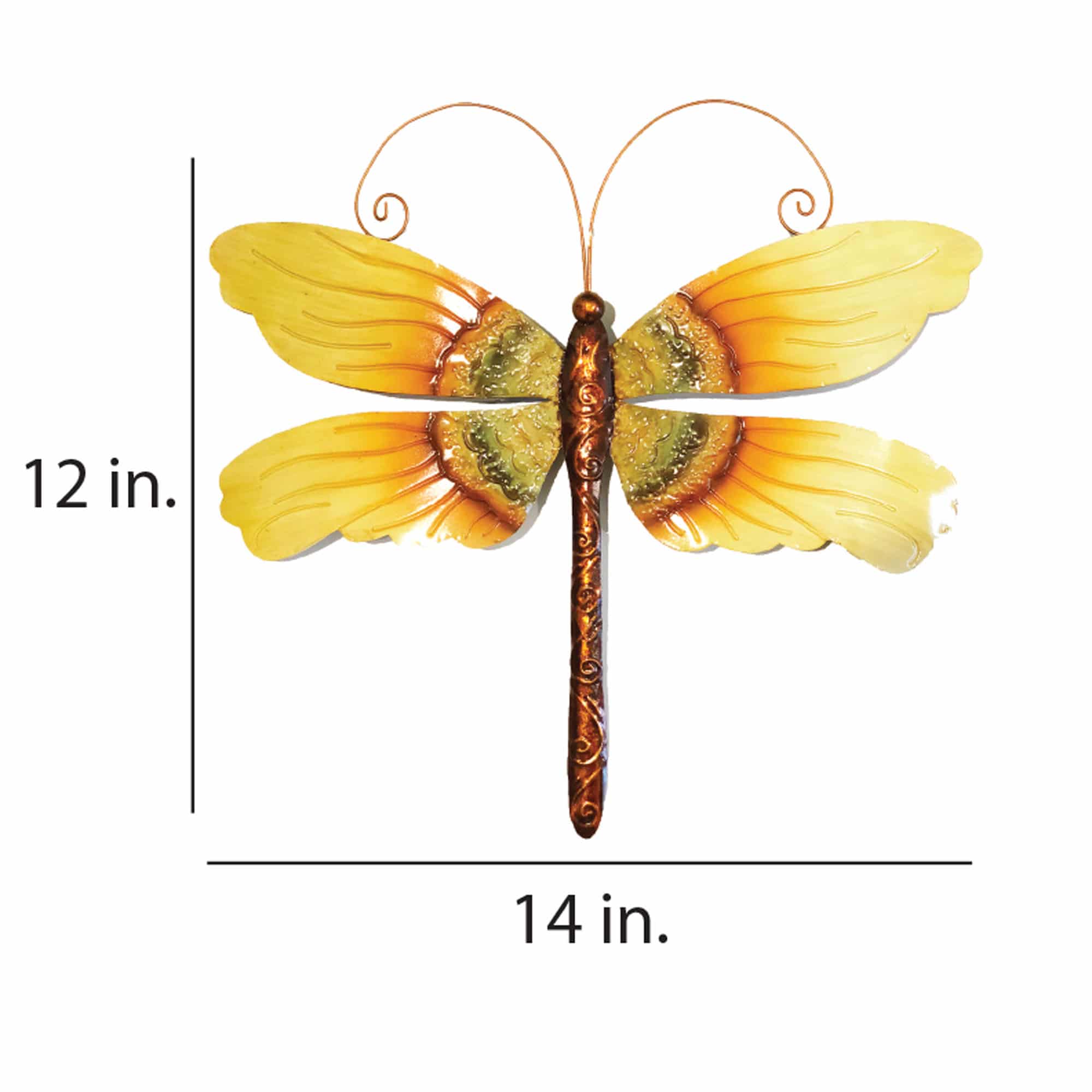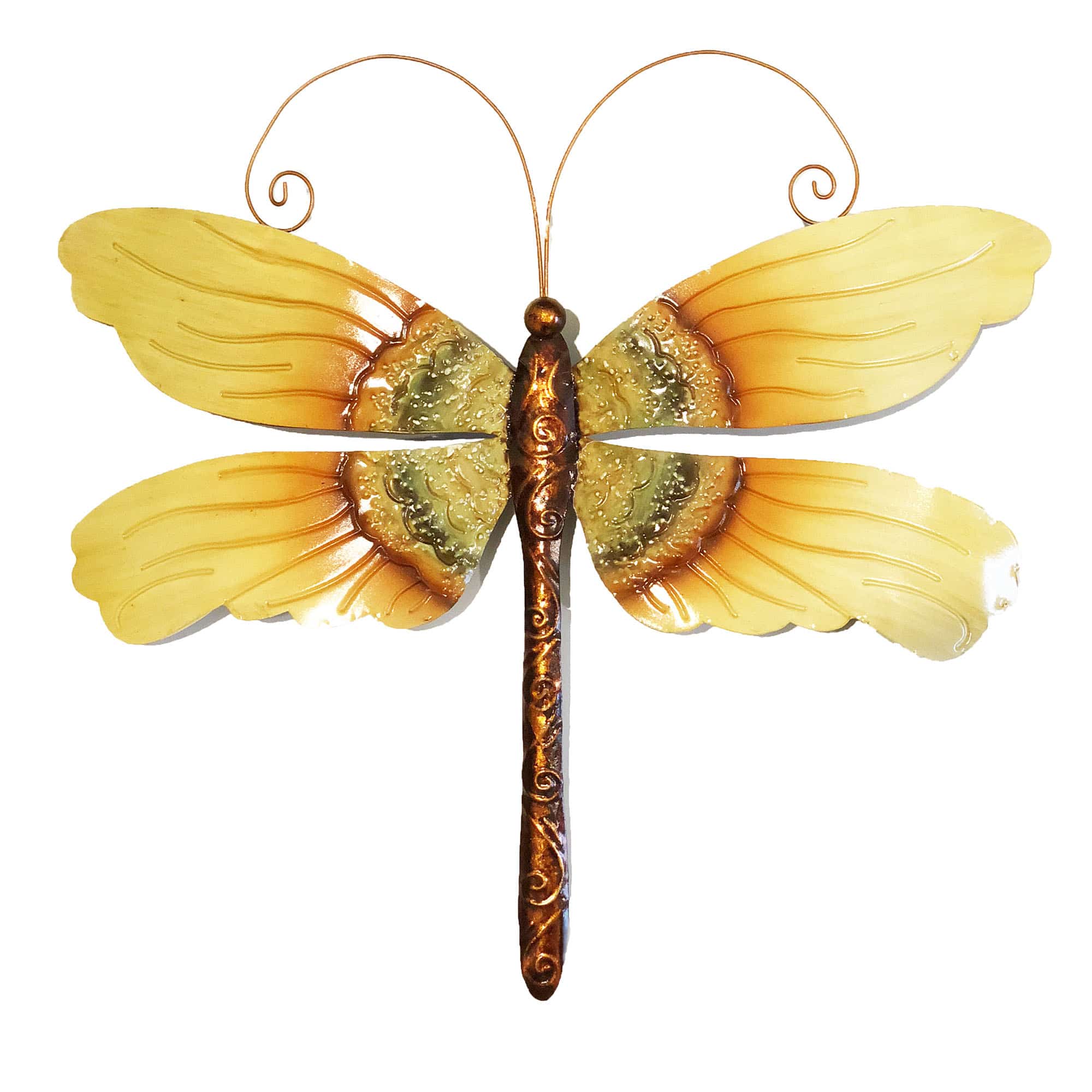The color pallet of this dragonfly is true to form with its aqua, gold, and brown hues. The artist adds leafy structure to the dragonfly�s to the upper wing while providing shimmer and geomatics design with capiz shell in the lower half. Additional detail is added with hand painted, white foliage that starts on the lower wing and travels to the upper wing, reflecting the dragonfly�s natural habitat.
The basic frame of the dragonfly is created using tin, which is powder-coated with a black finish and makes this piece safe to use outdoors. The edges of the frame are reinforced using thicker tin wire. The front of this piece is adorned in areas with capiz shell, an oyster native to the Philippines, before being hand-painted and sealed with a water-based sealant. The primary purpose of this oyster to provide a source of food, however, the shell is a sustainable by-product that can be used for decoration. The capiz shell subtly replicates the reflective qualities of dragonflies in nature. The entire piece is lightweight and has an eyelet in the back allowing it to be hung using a finishing nail, command strip, or a push pin. Due to it being a natural material, the organic colors of capiz come through as tans and browns underneath the paint.
